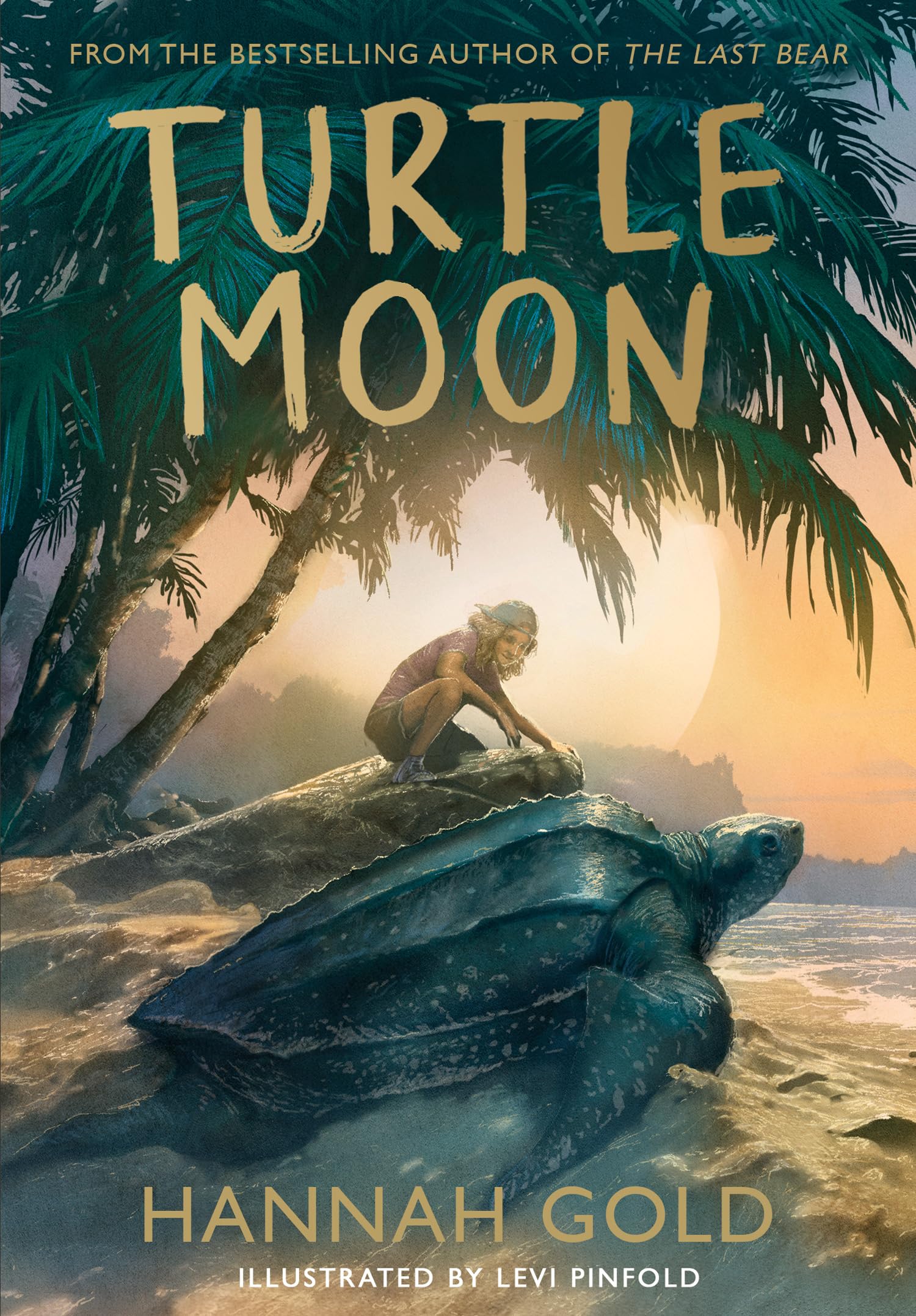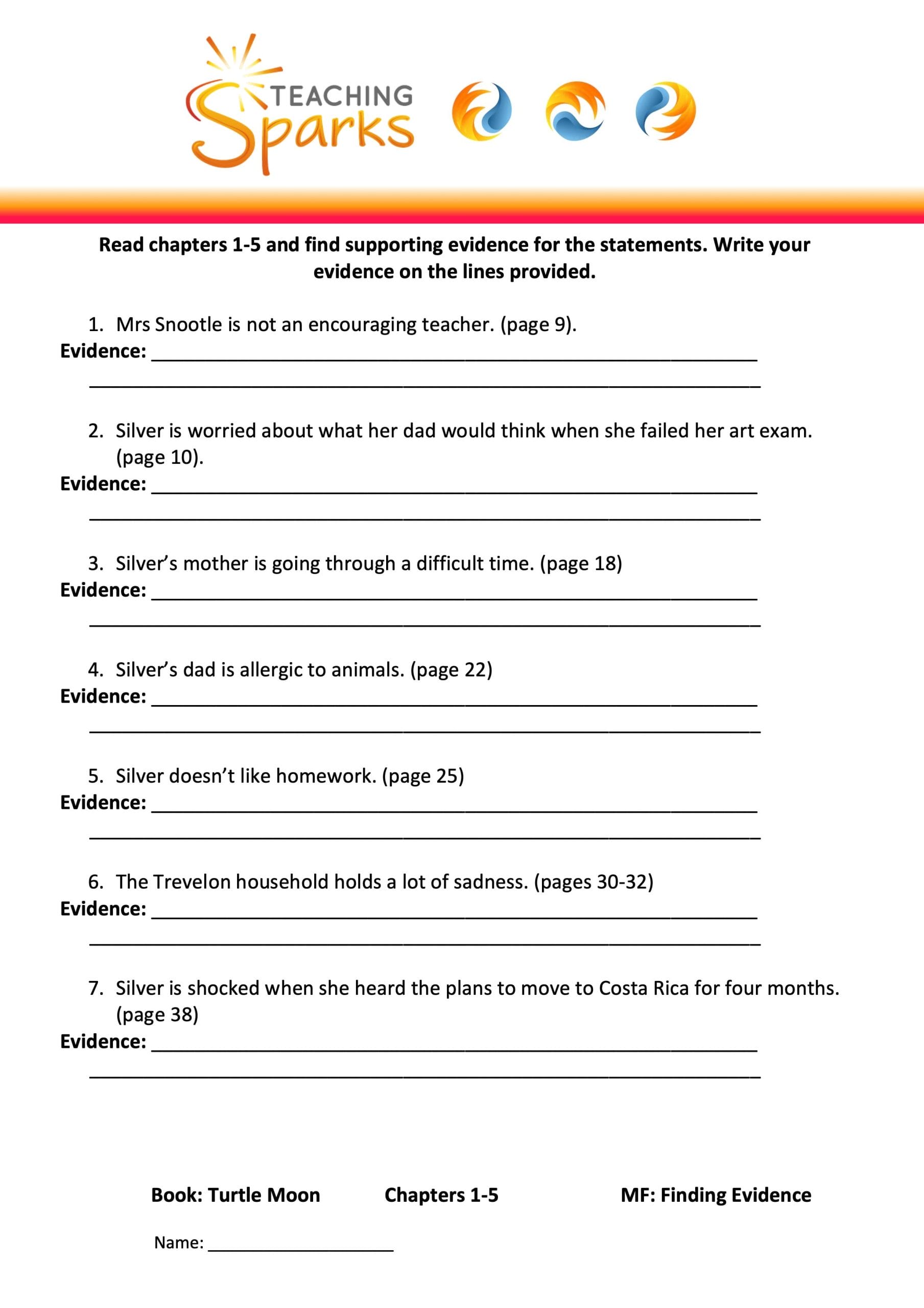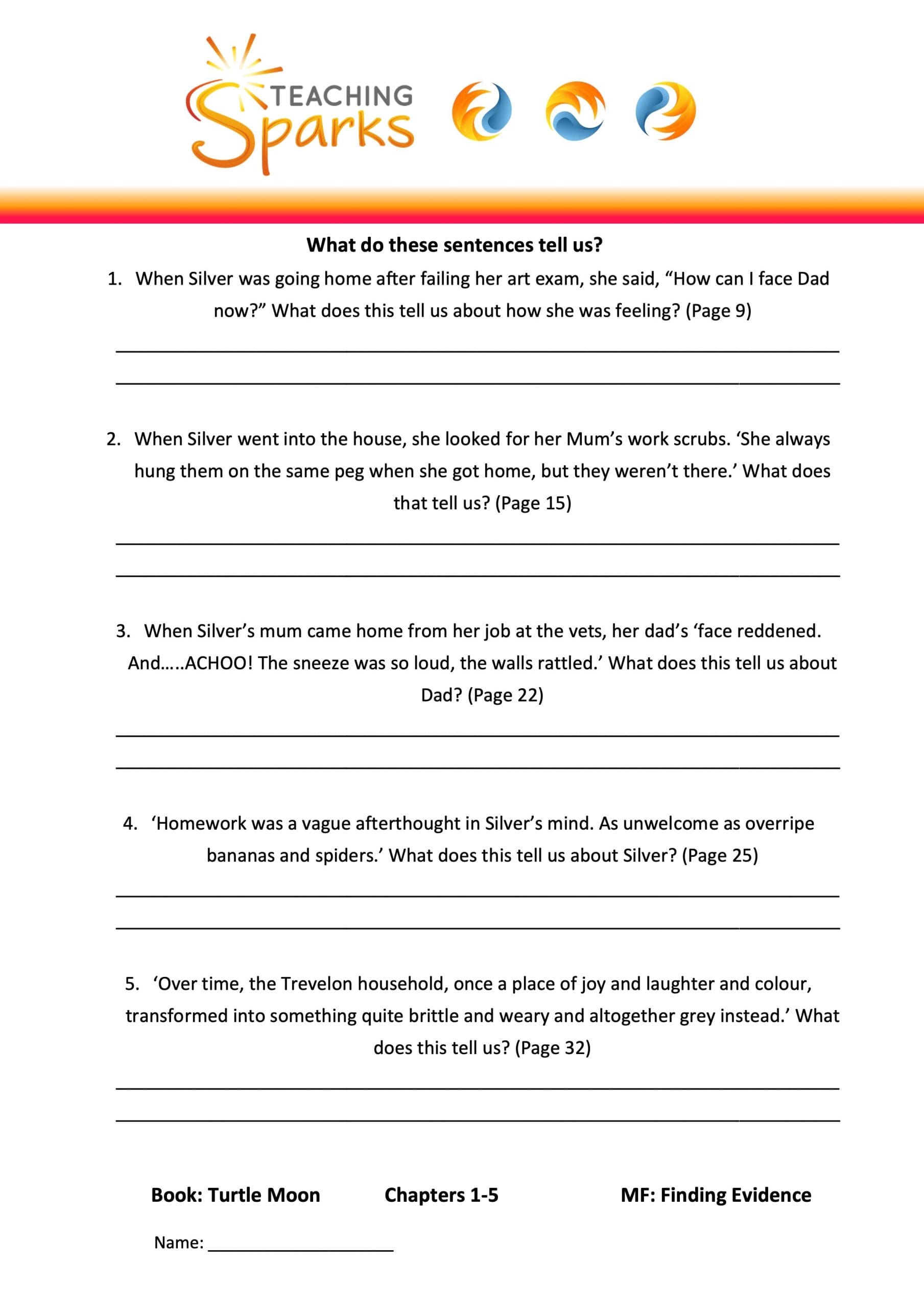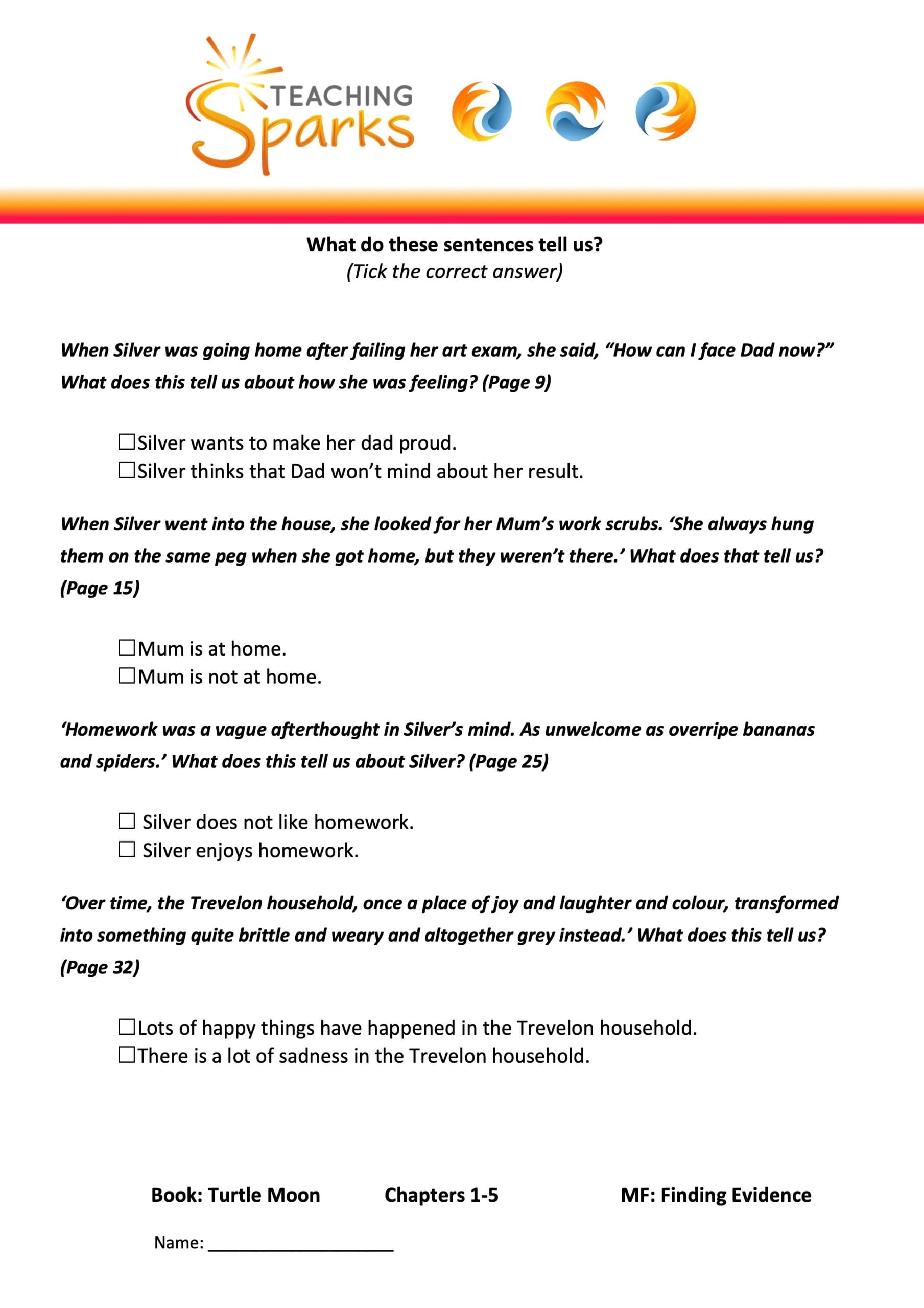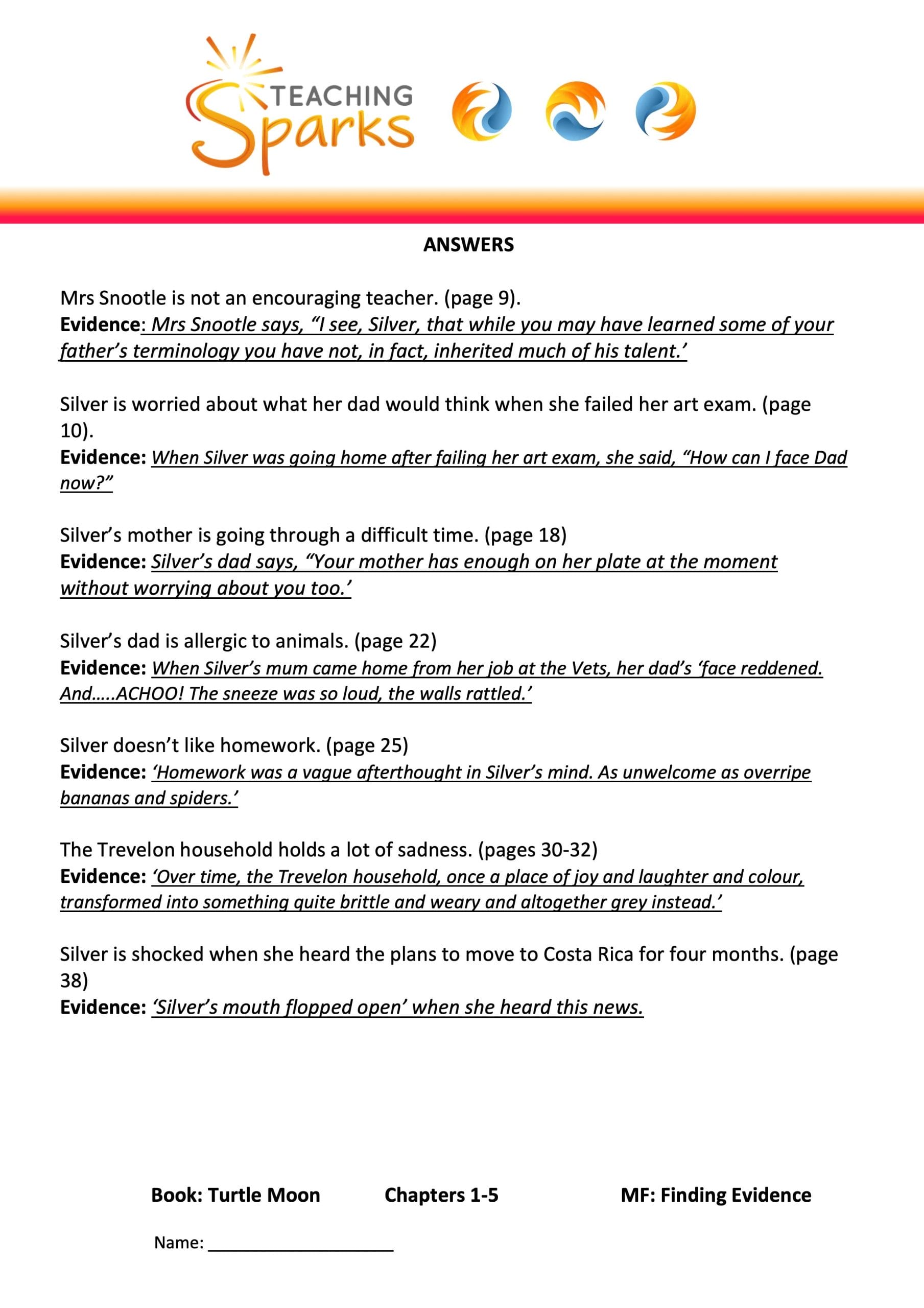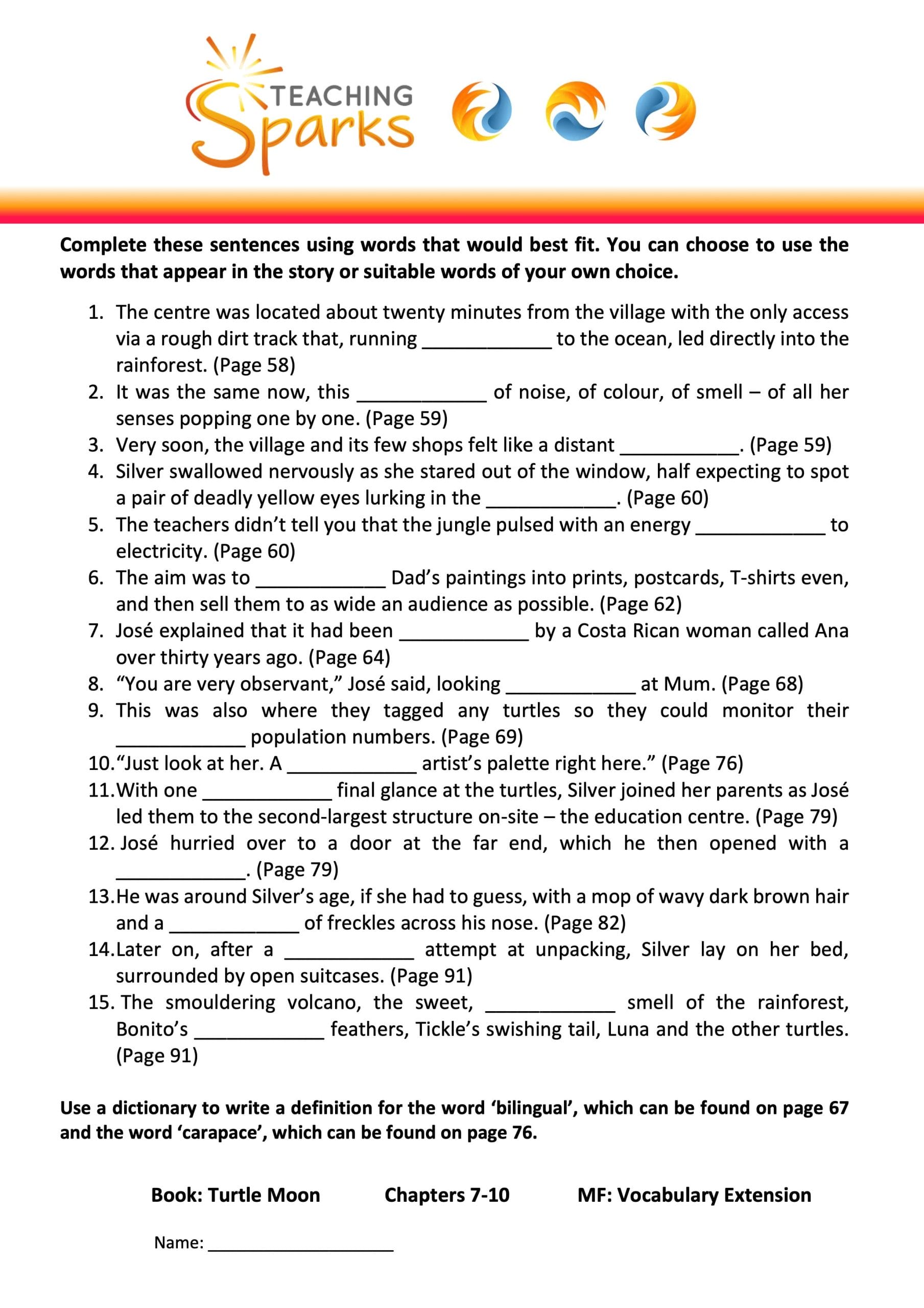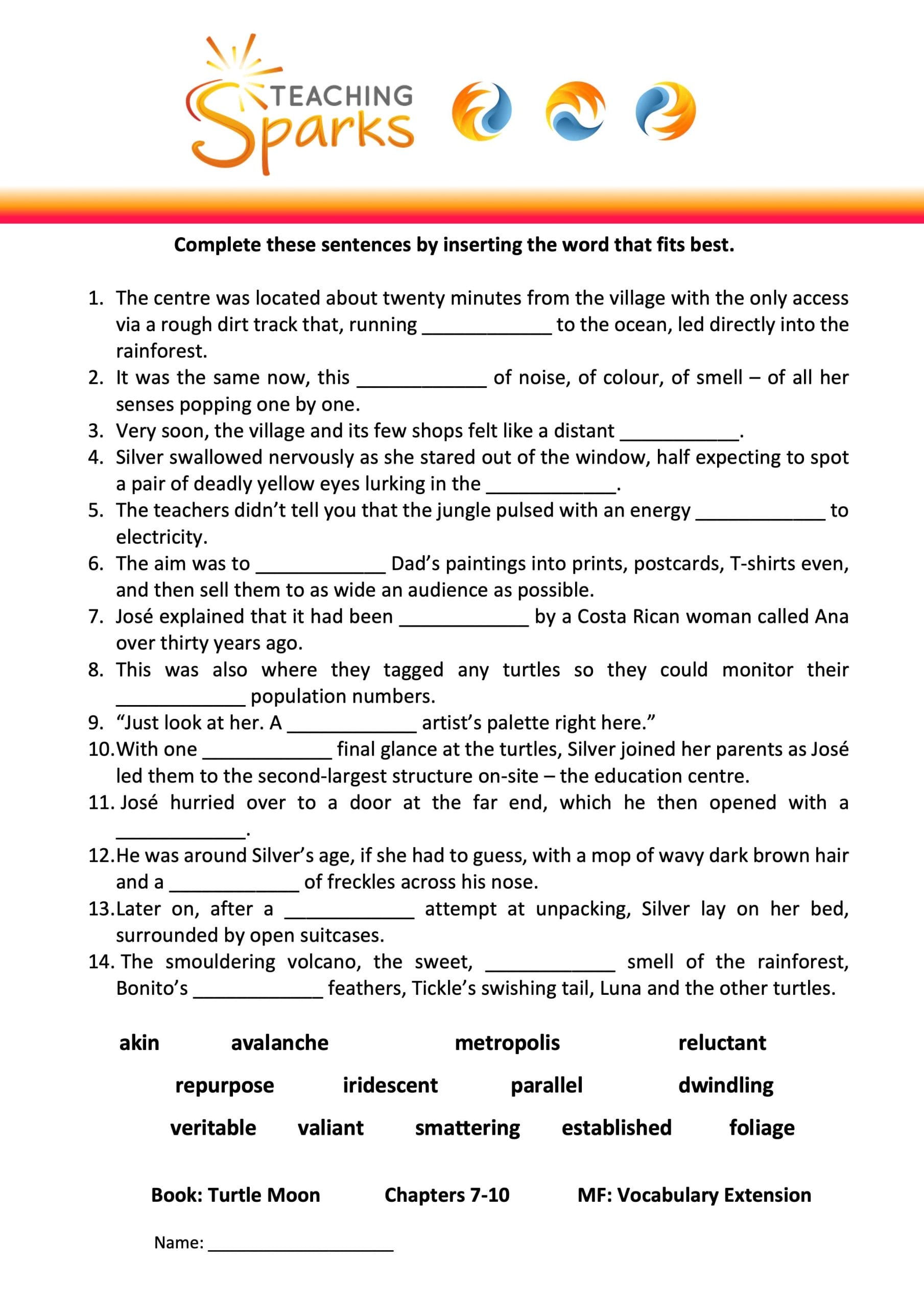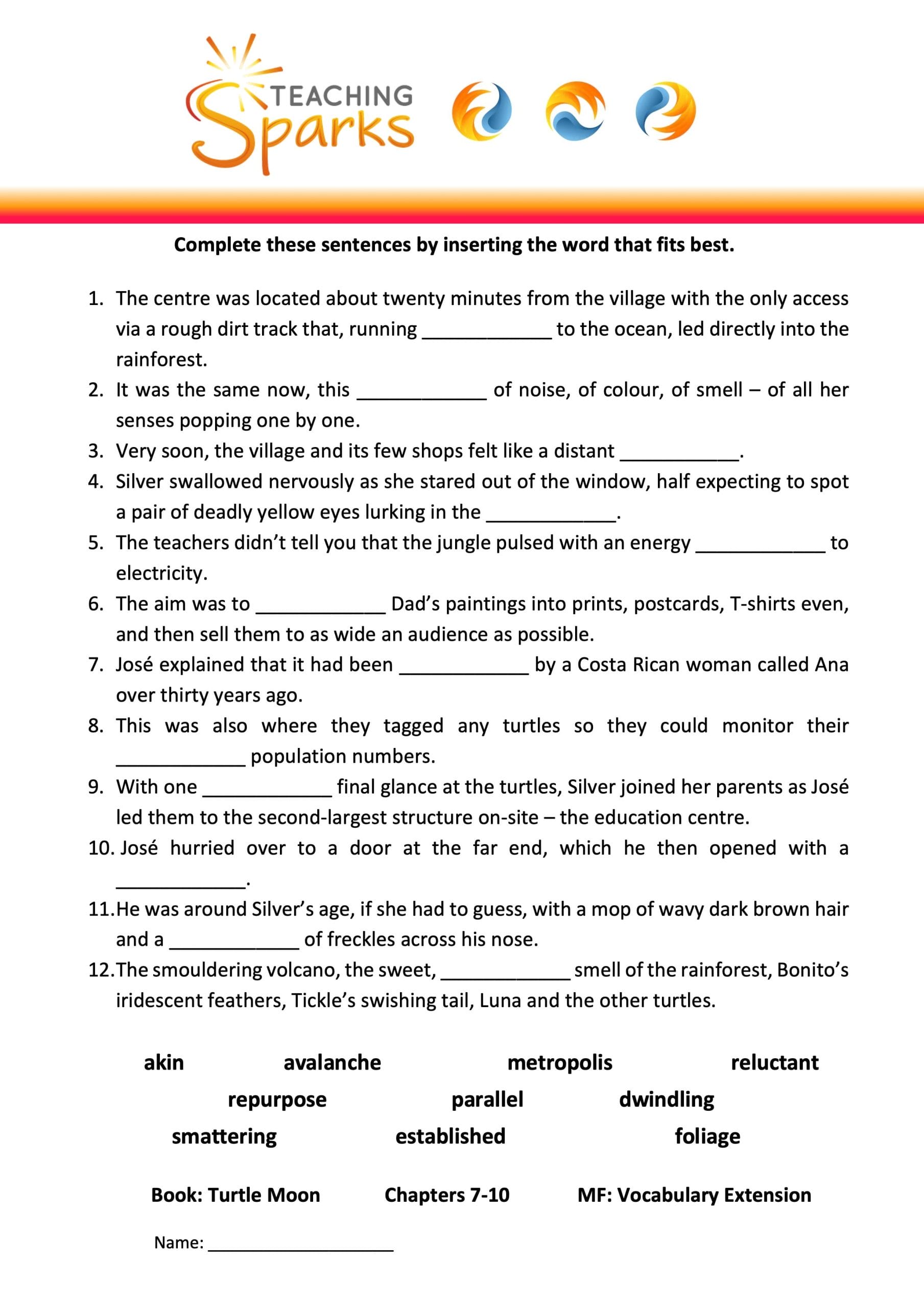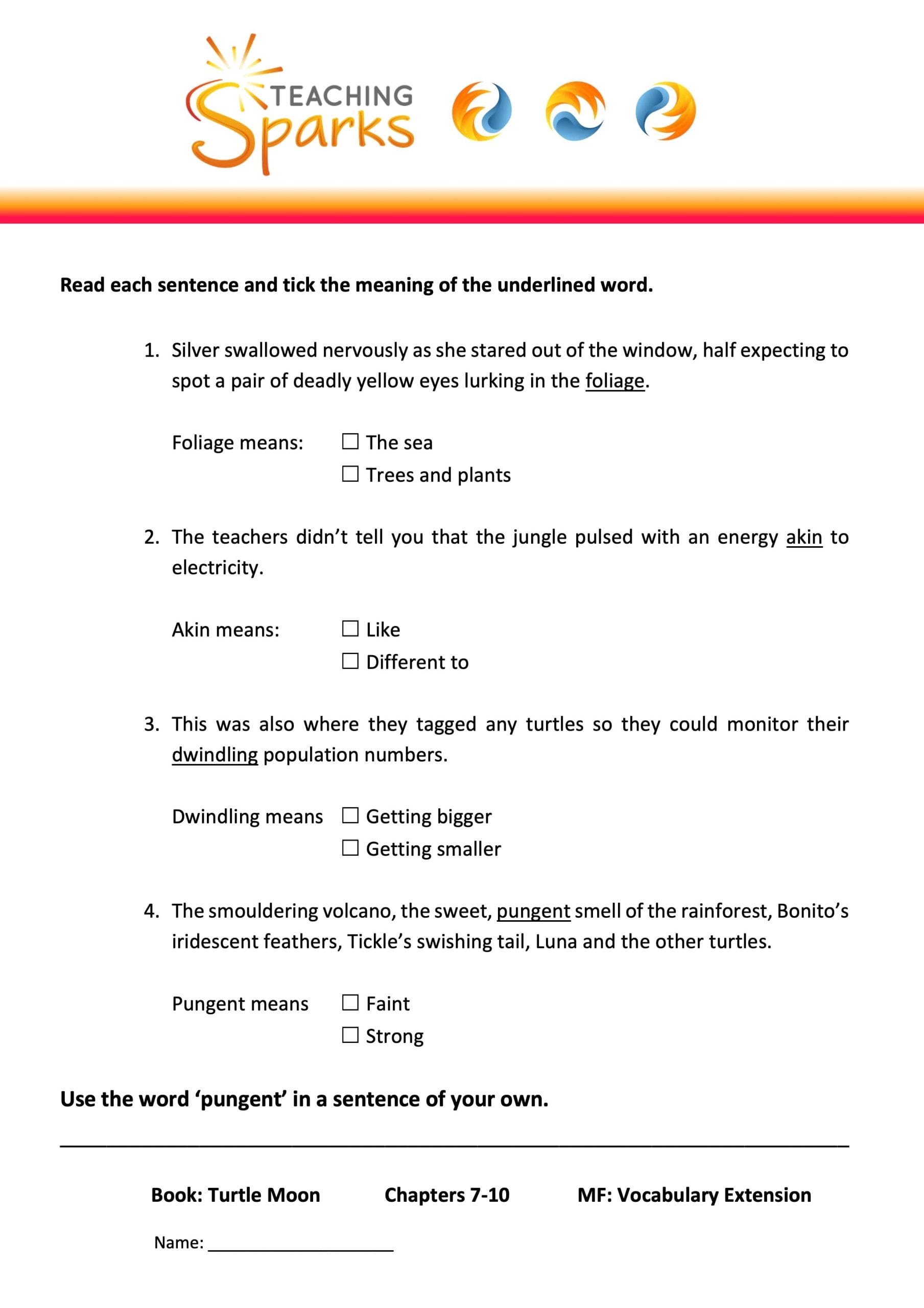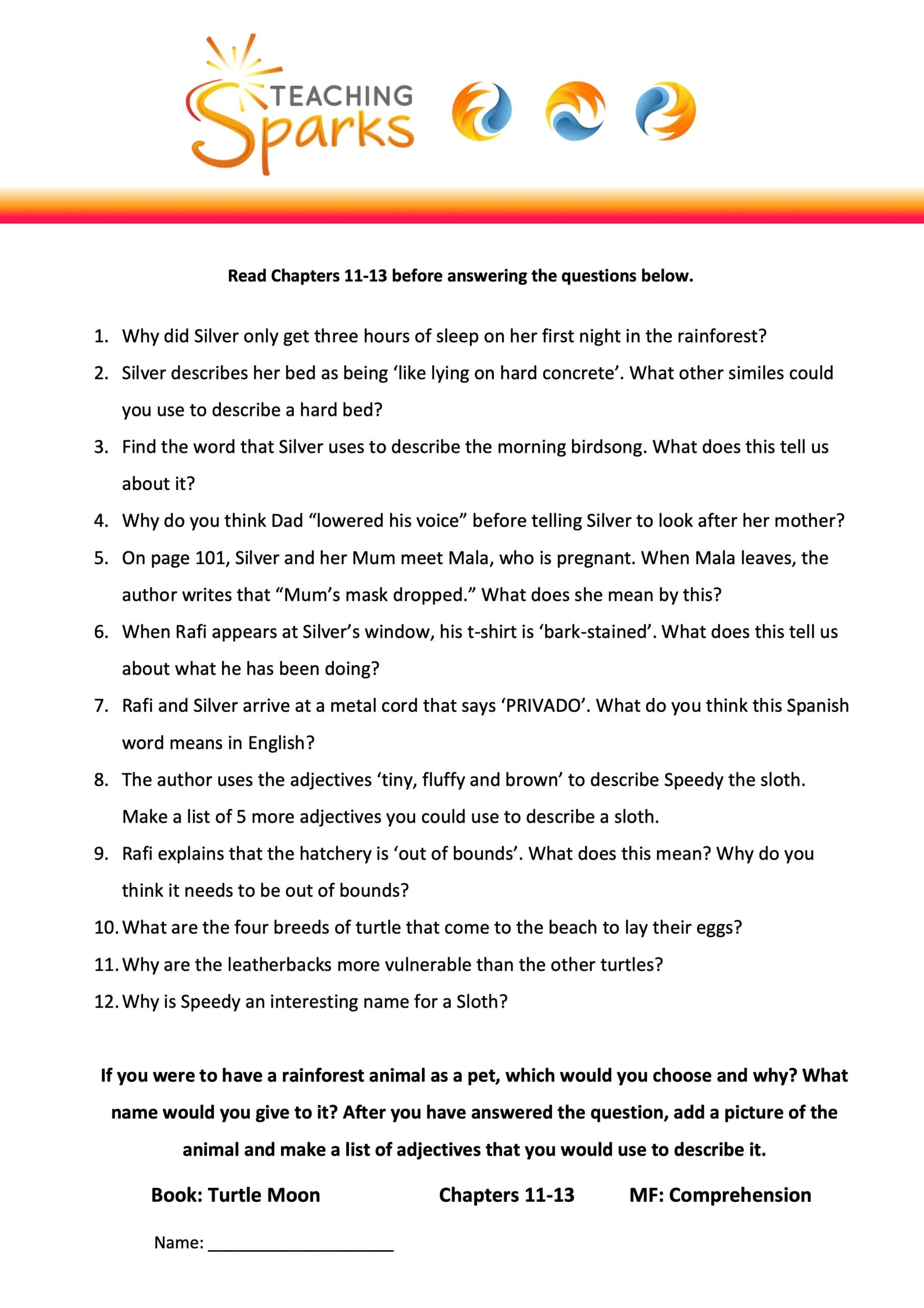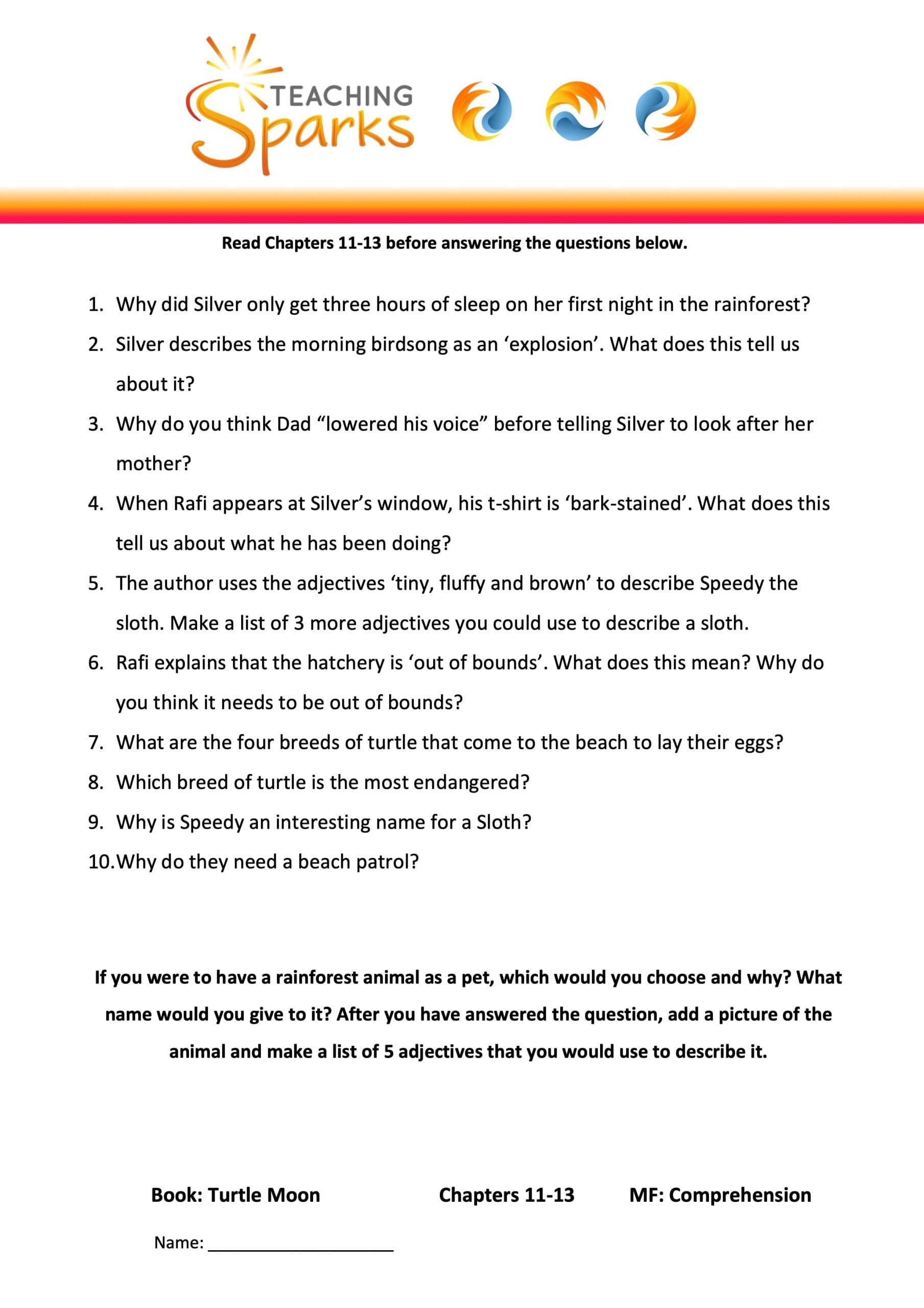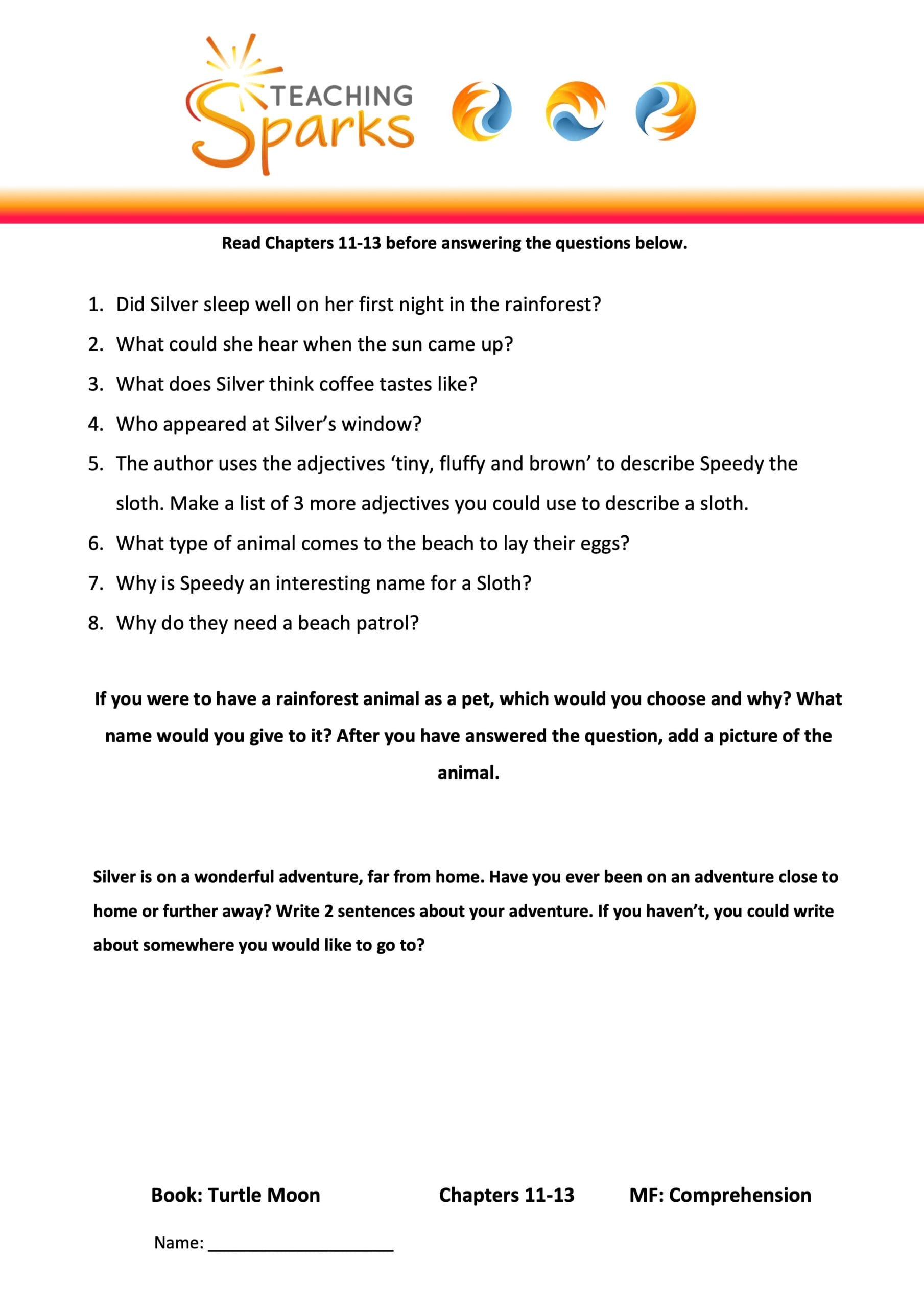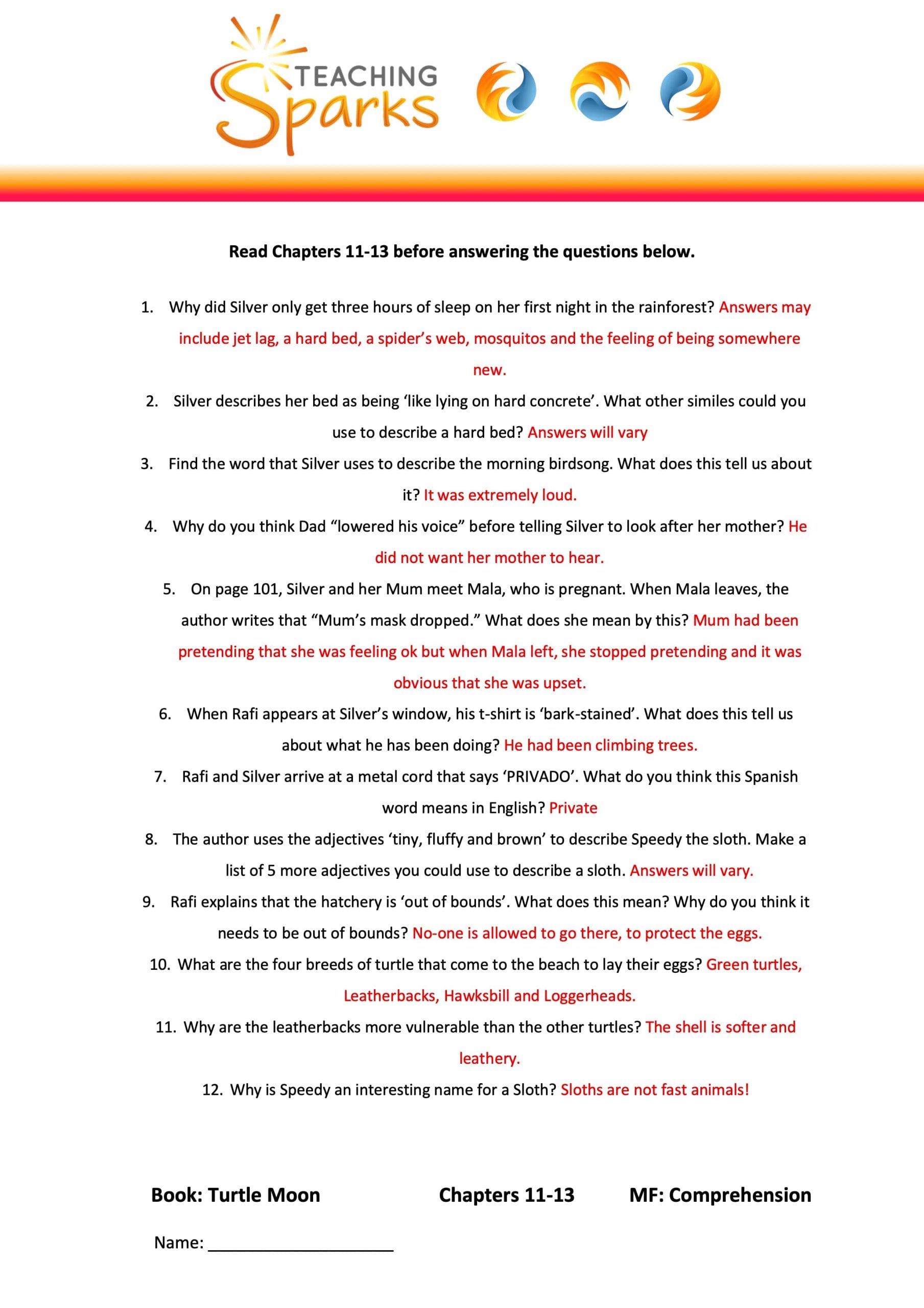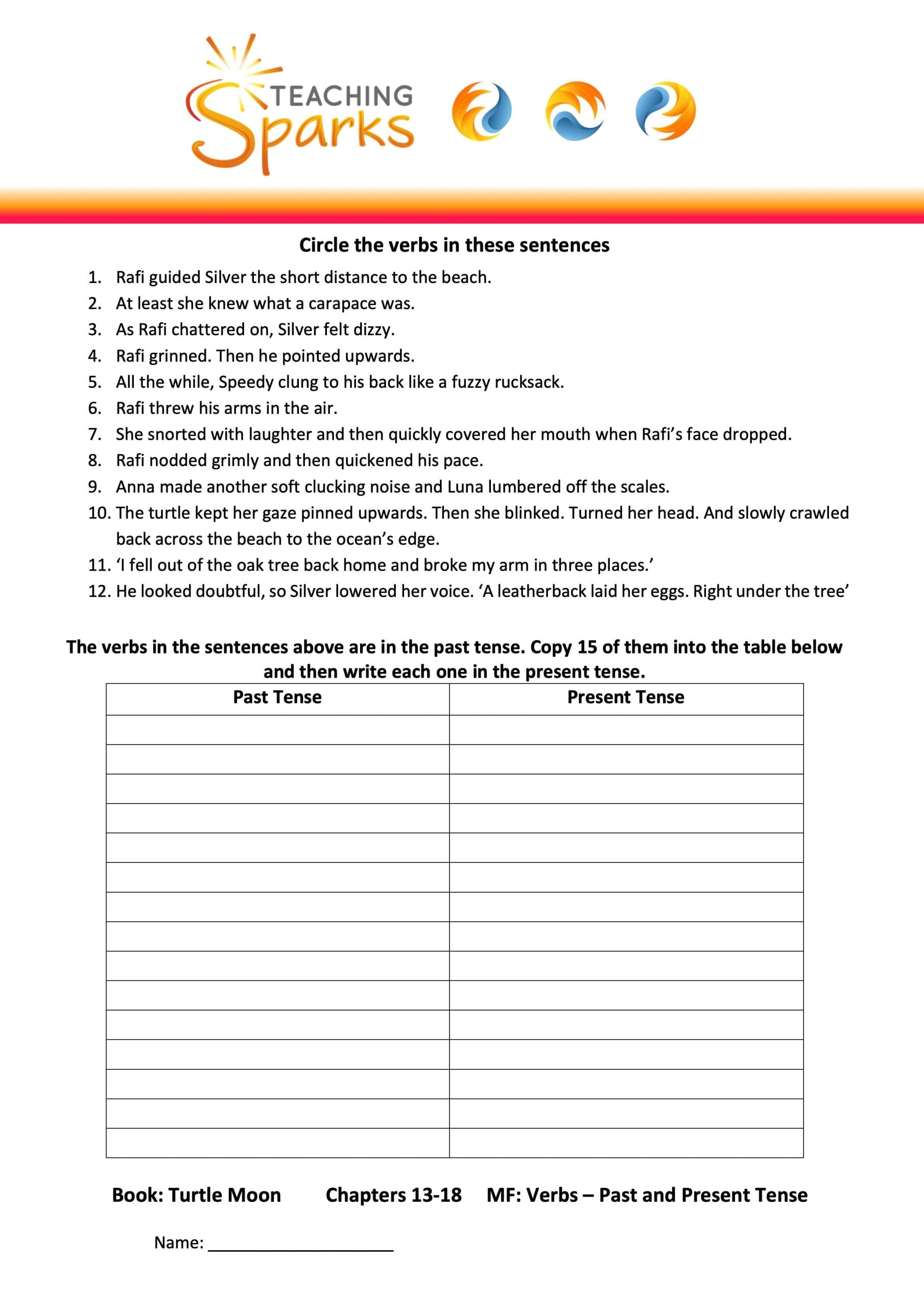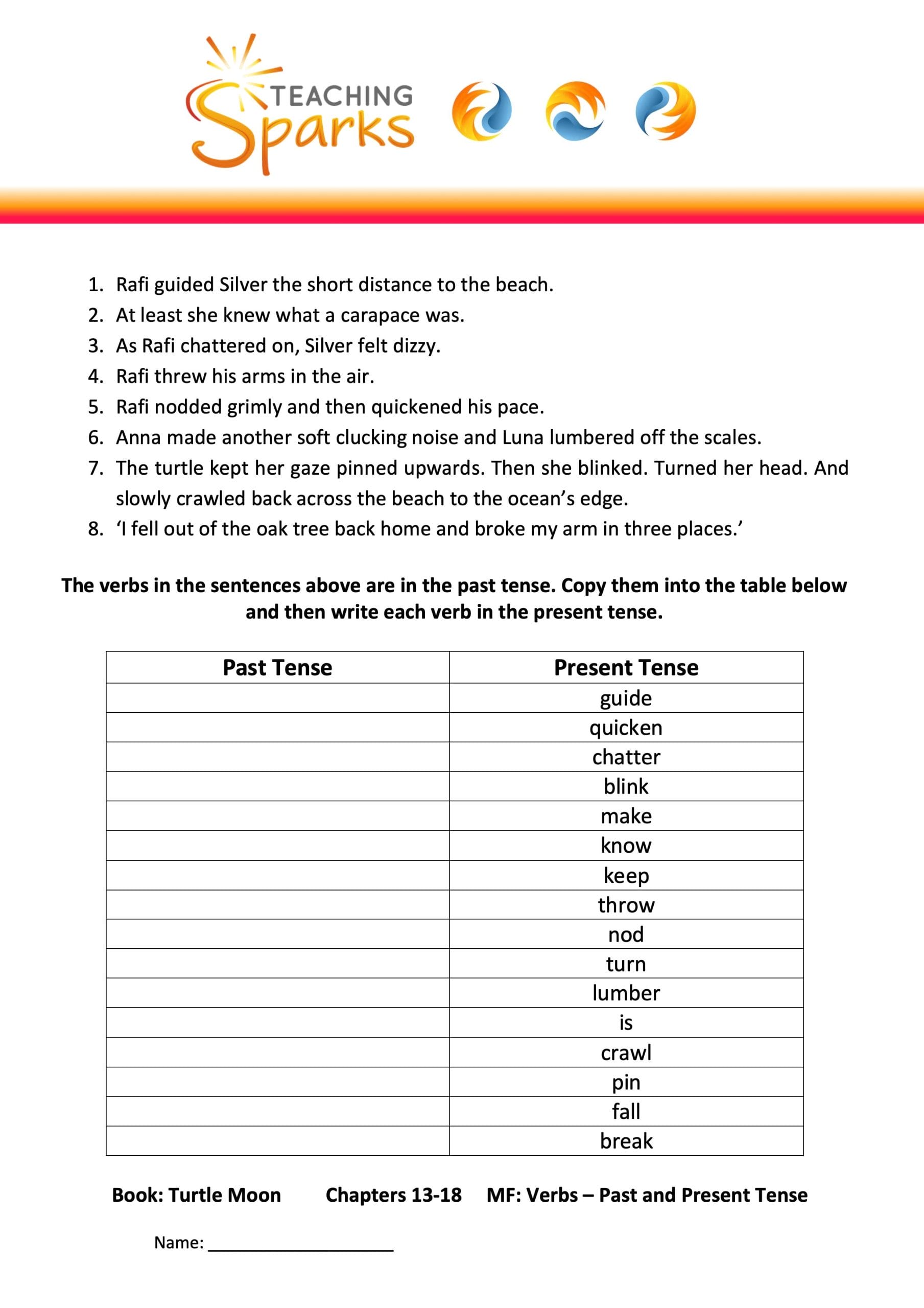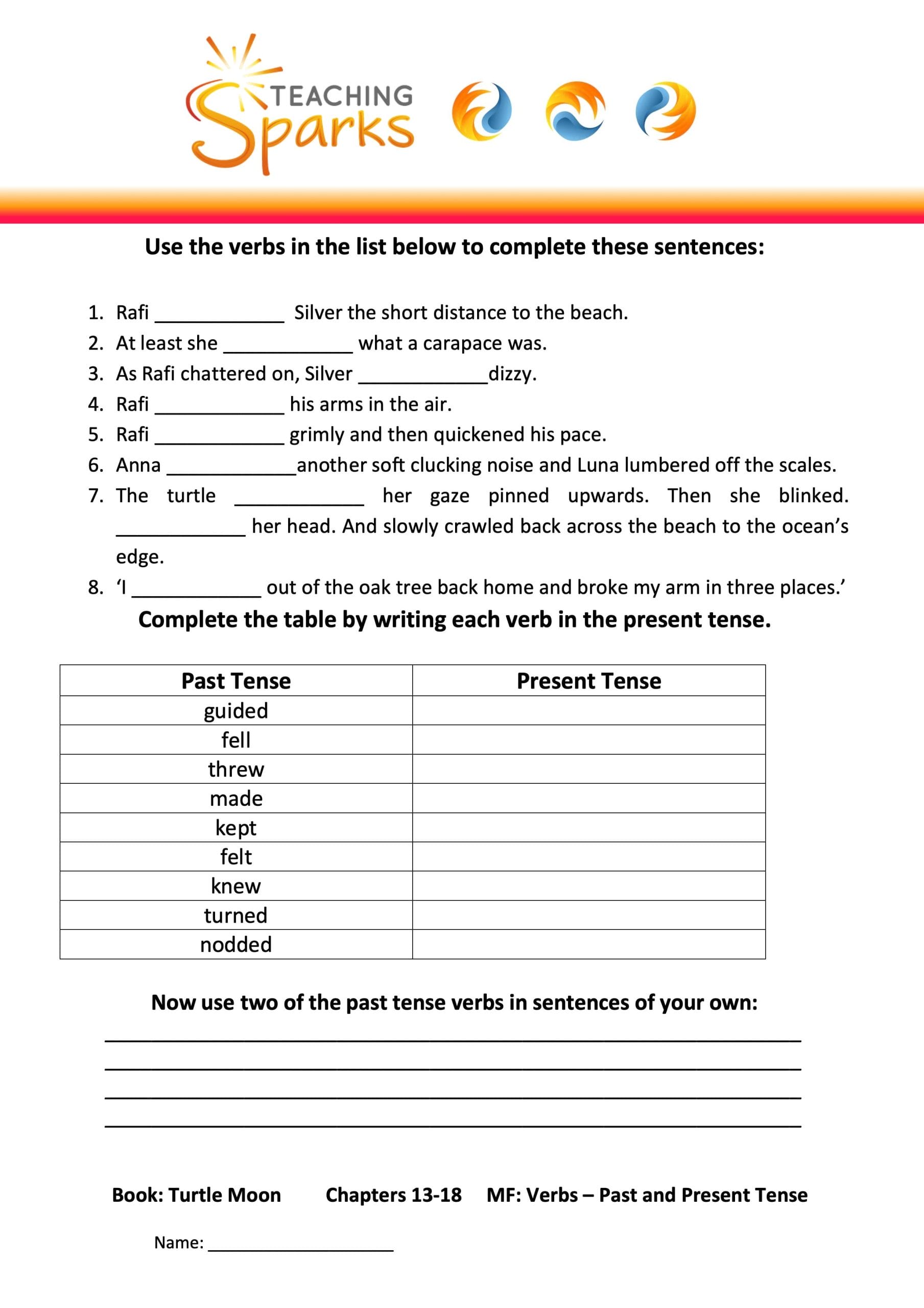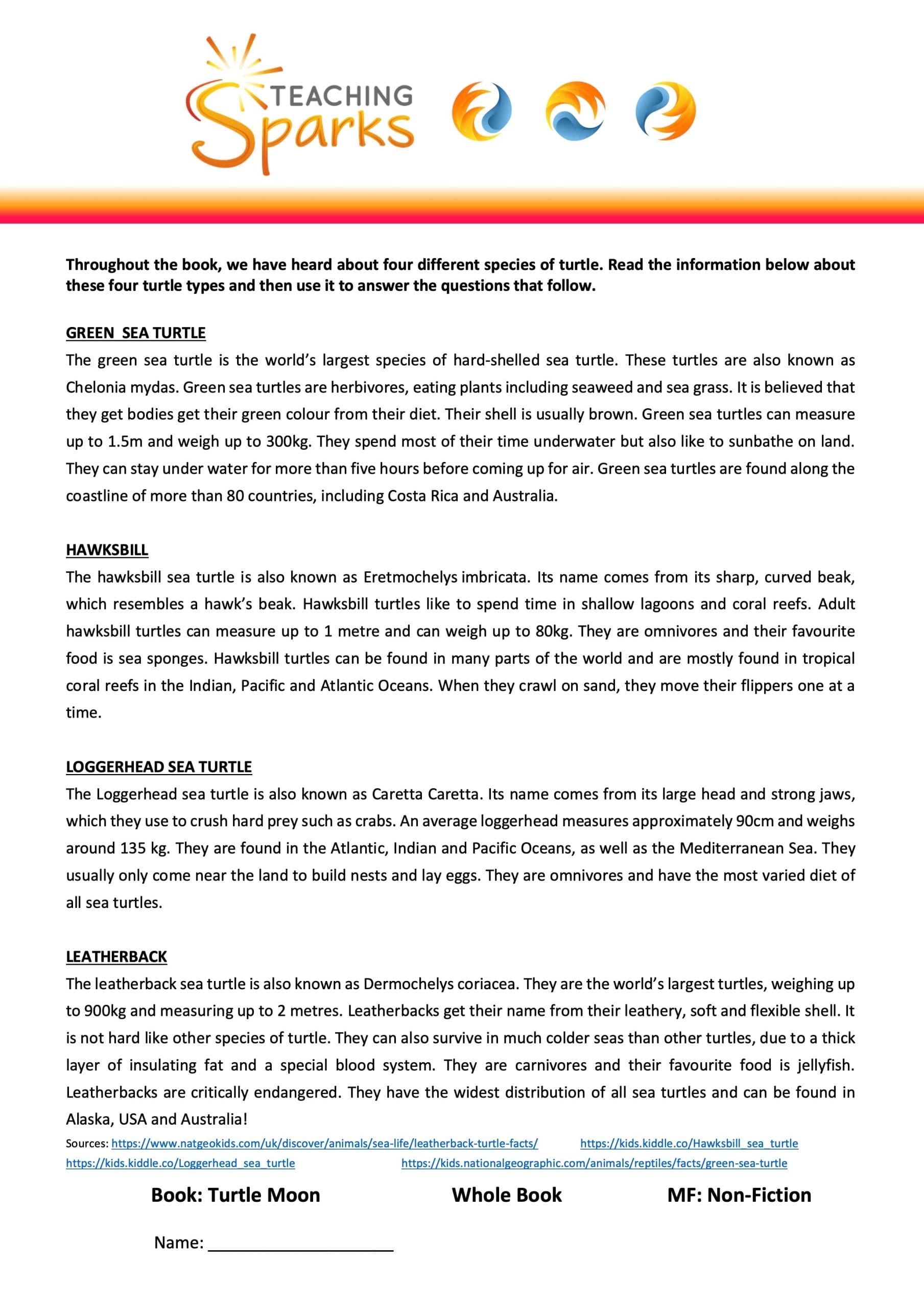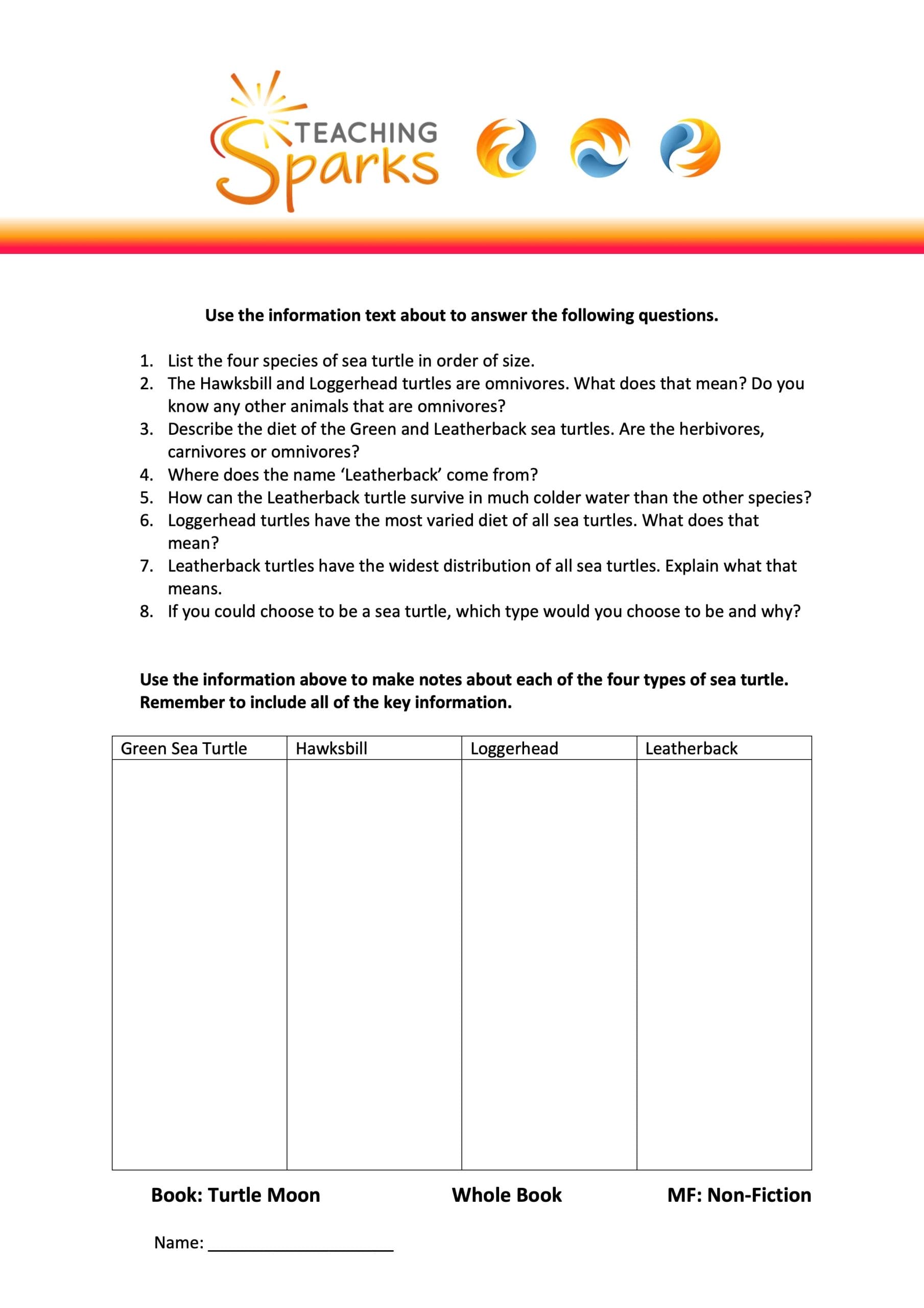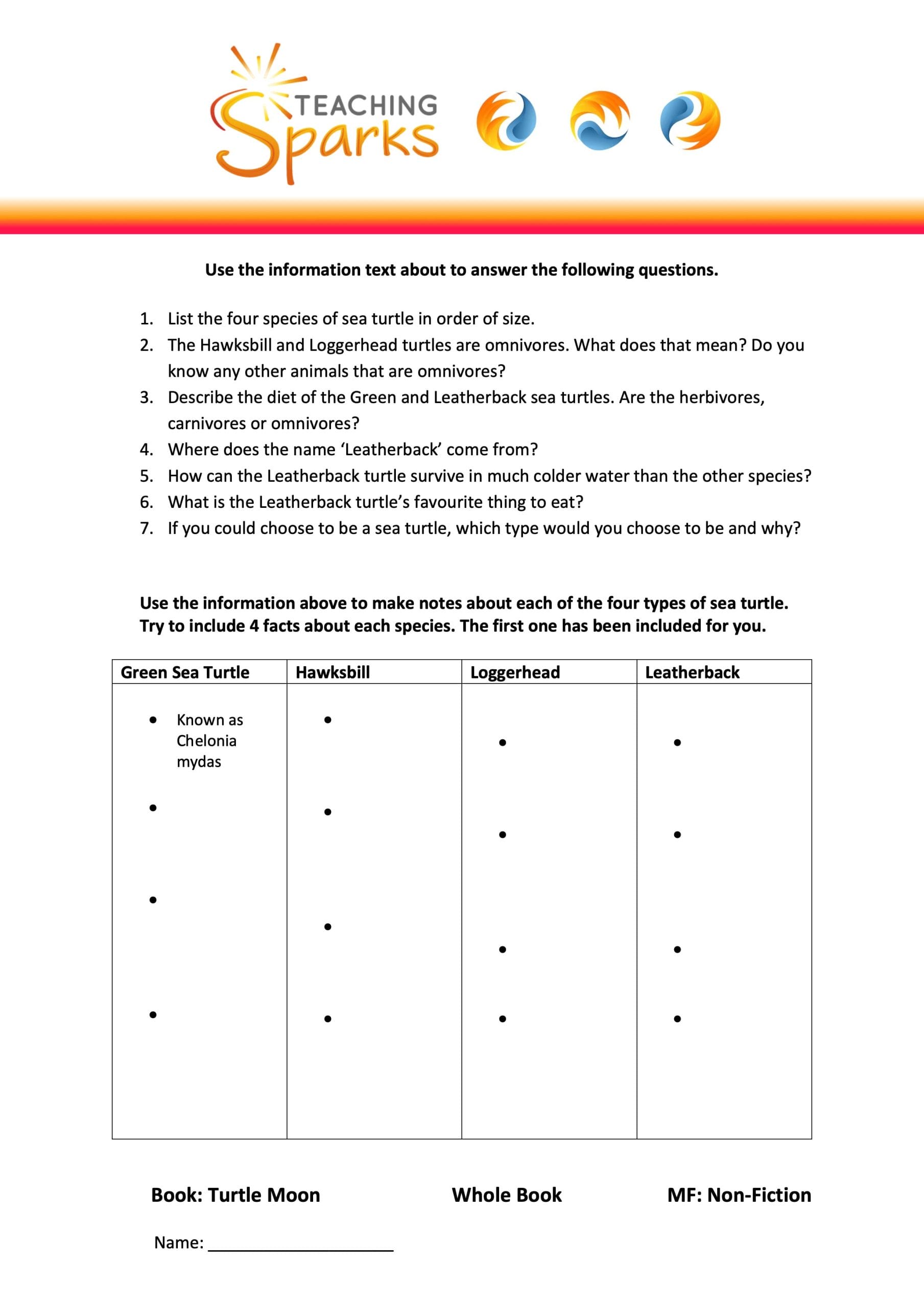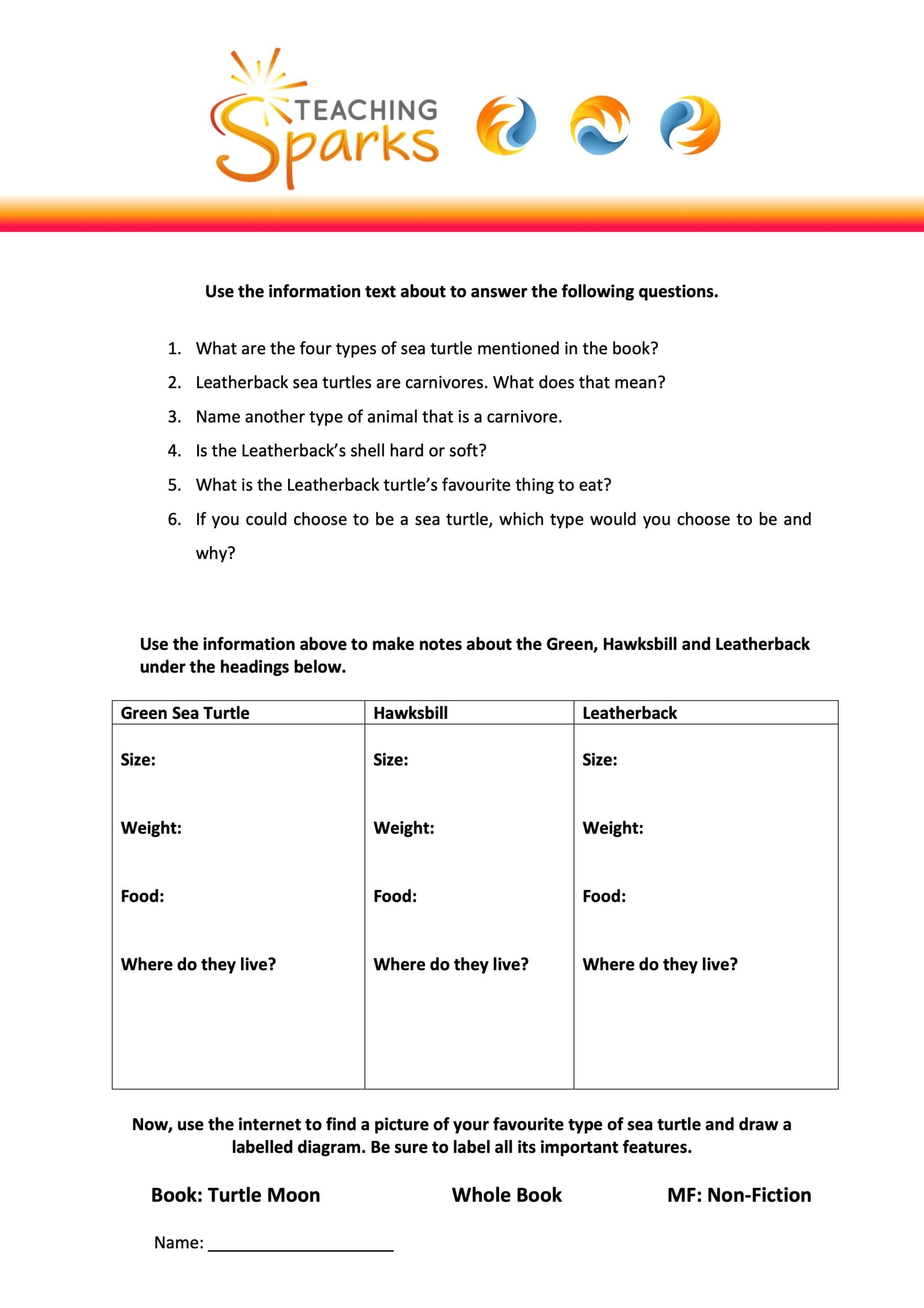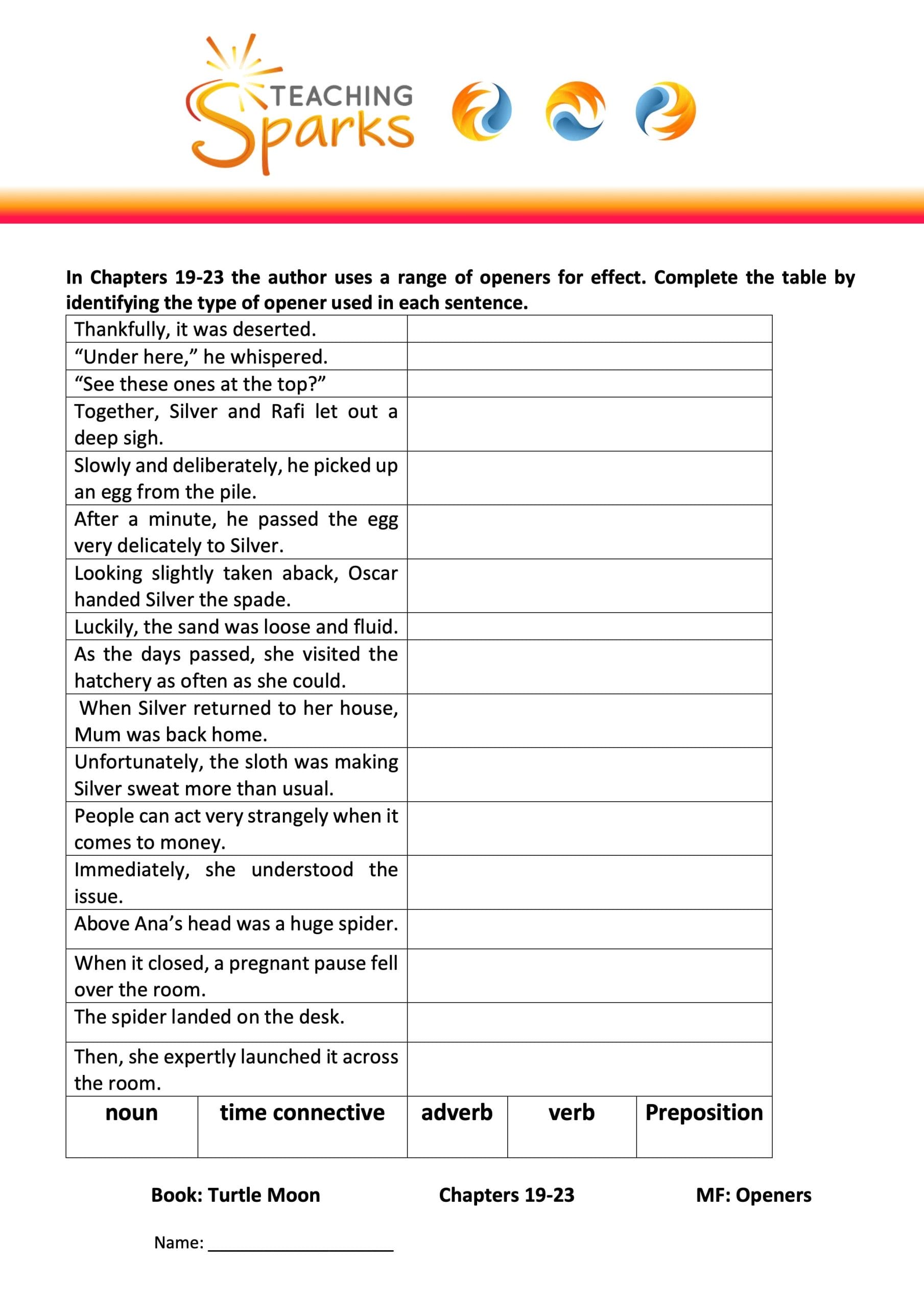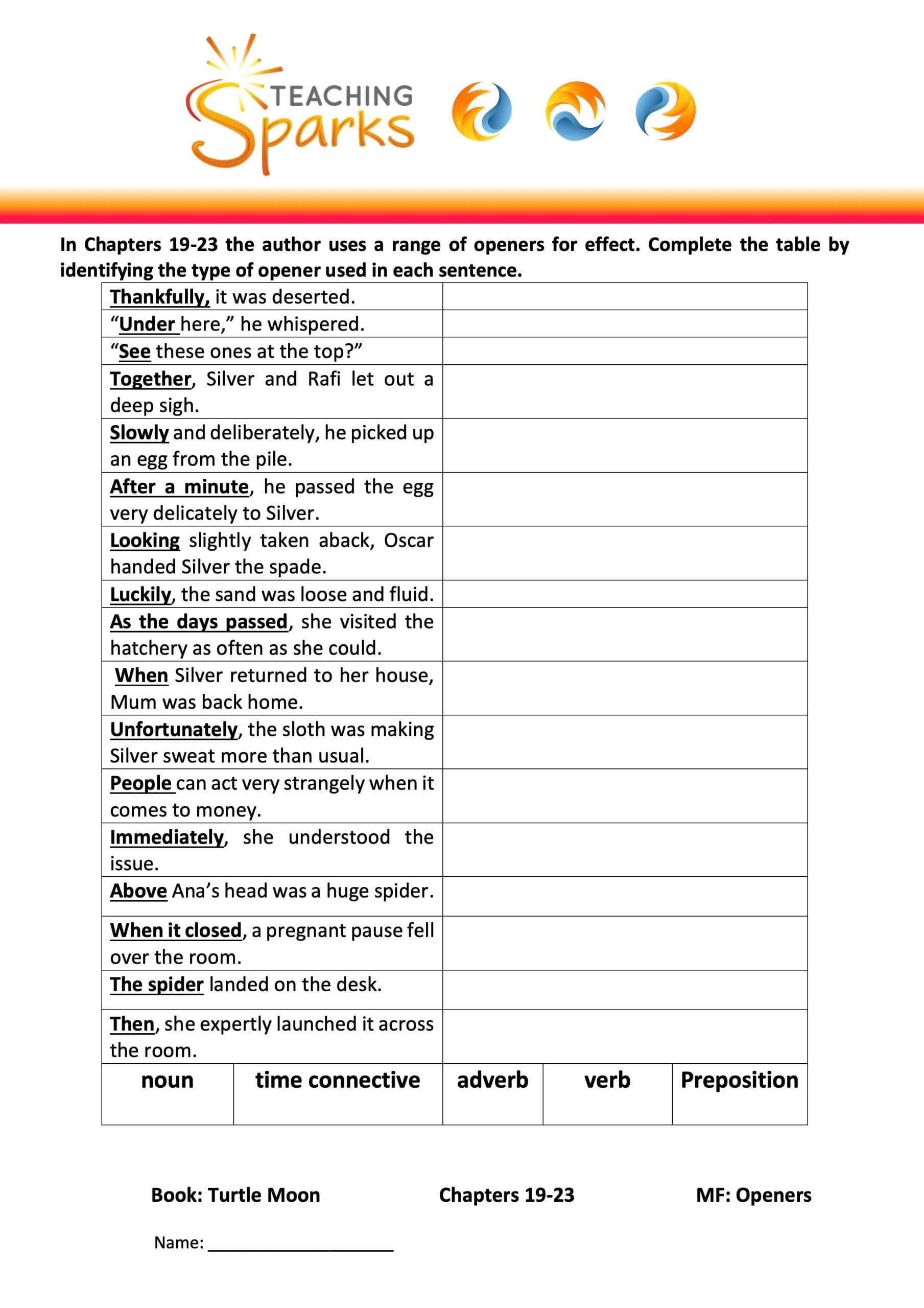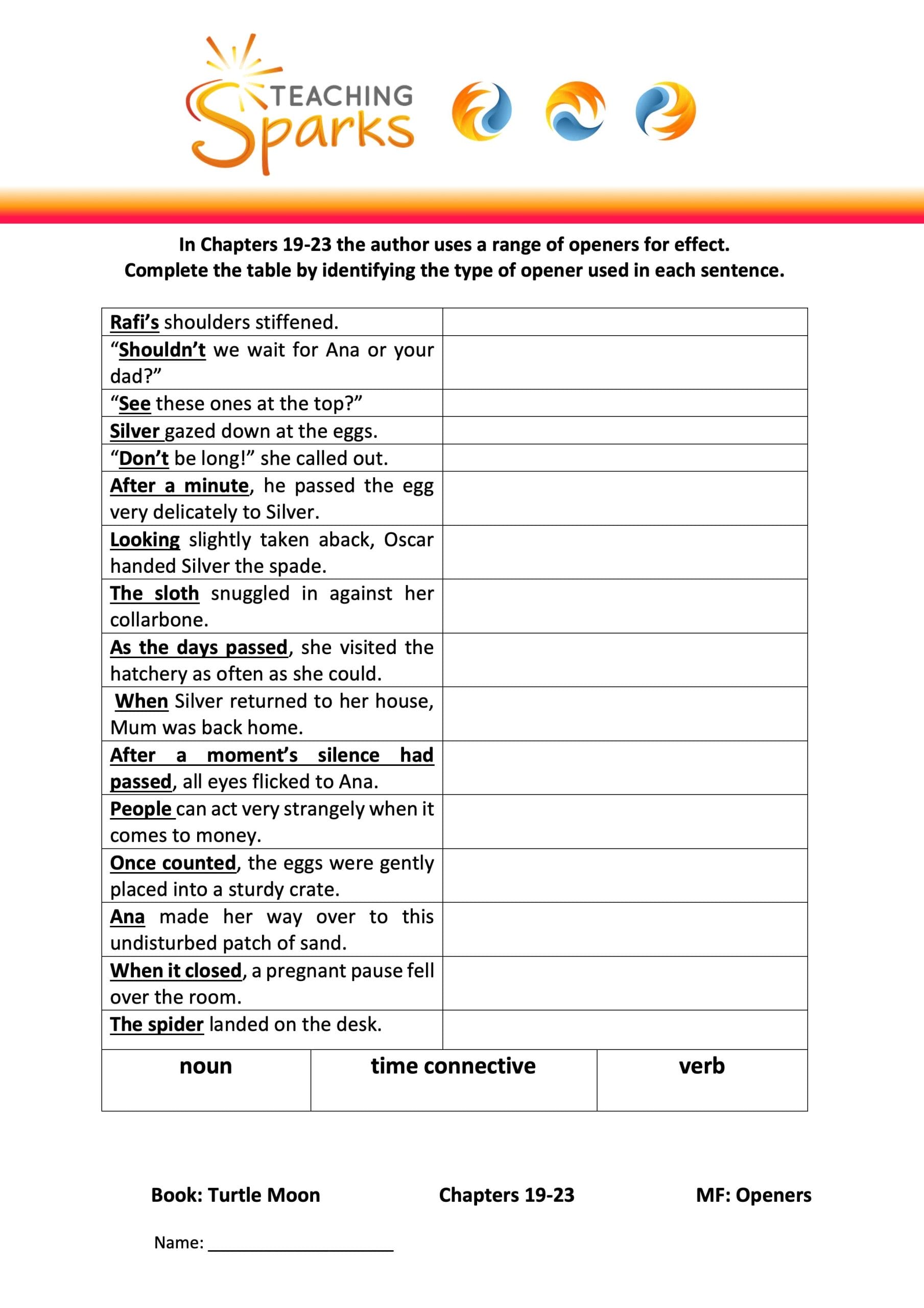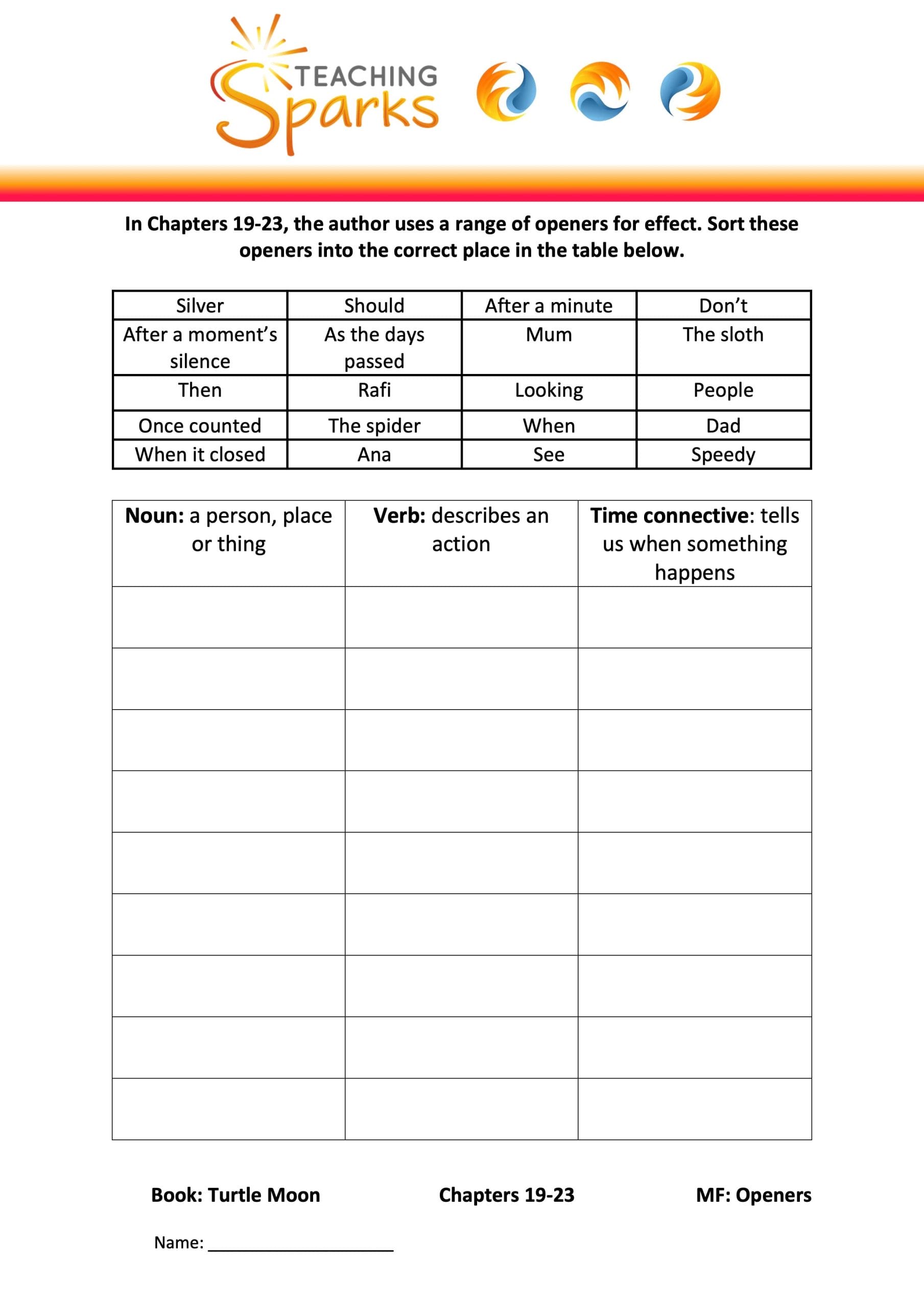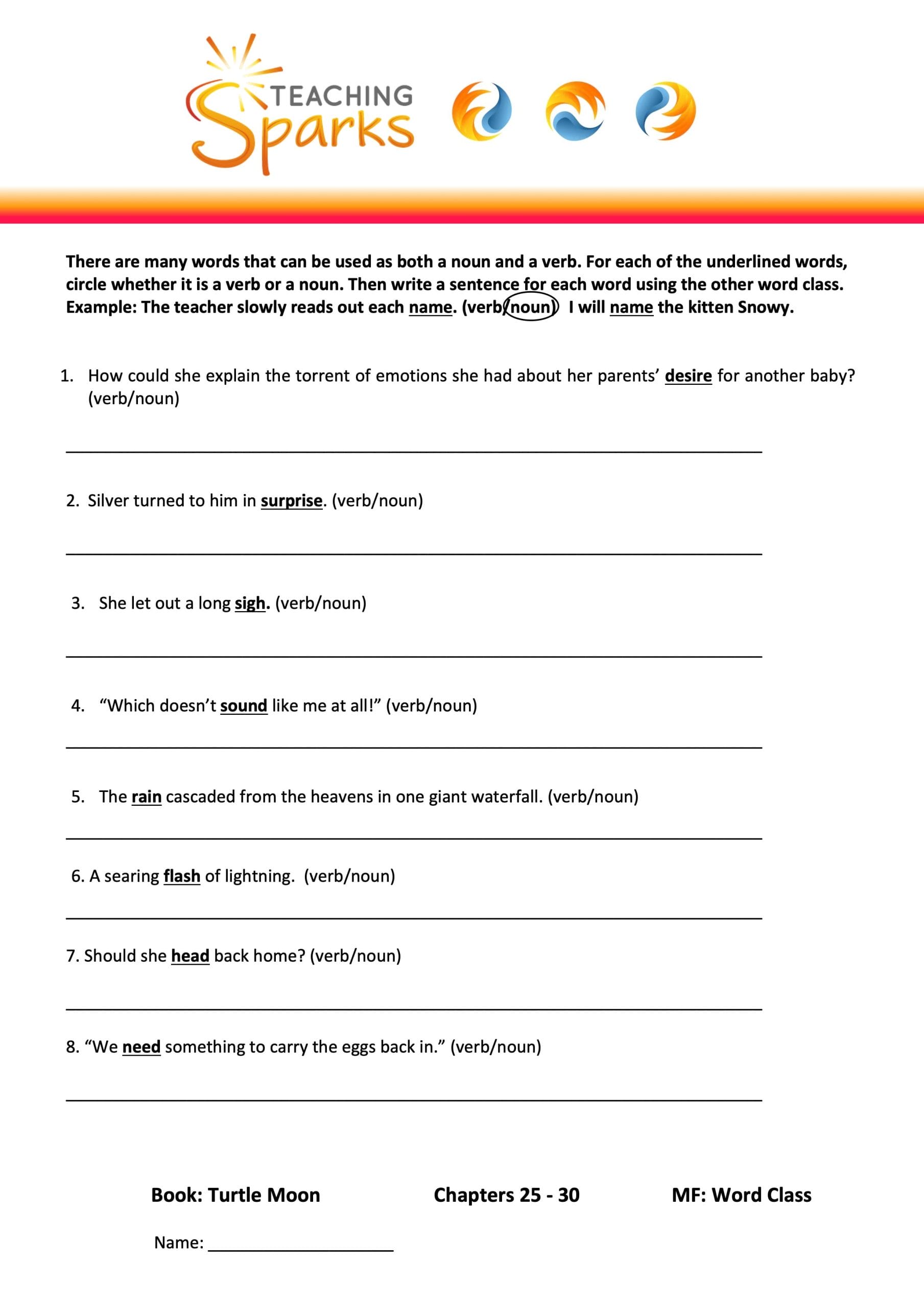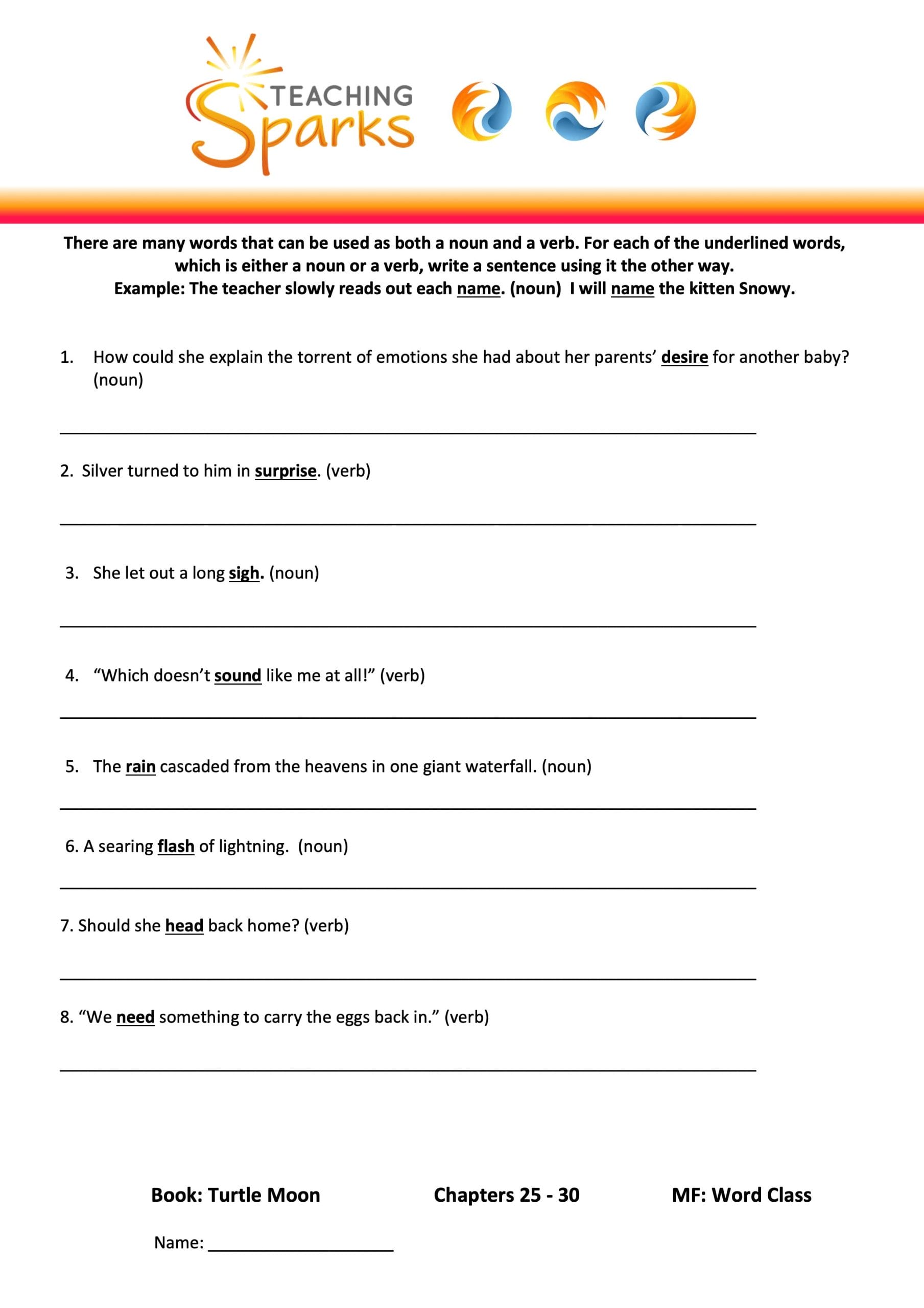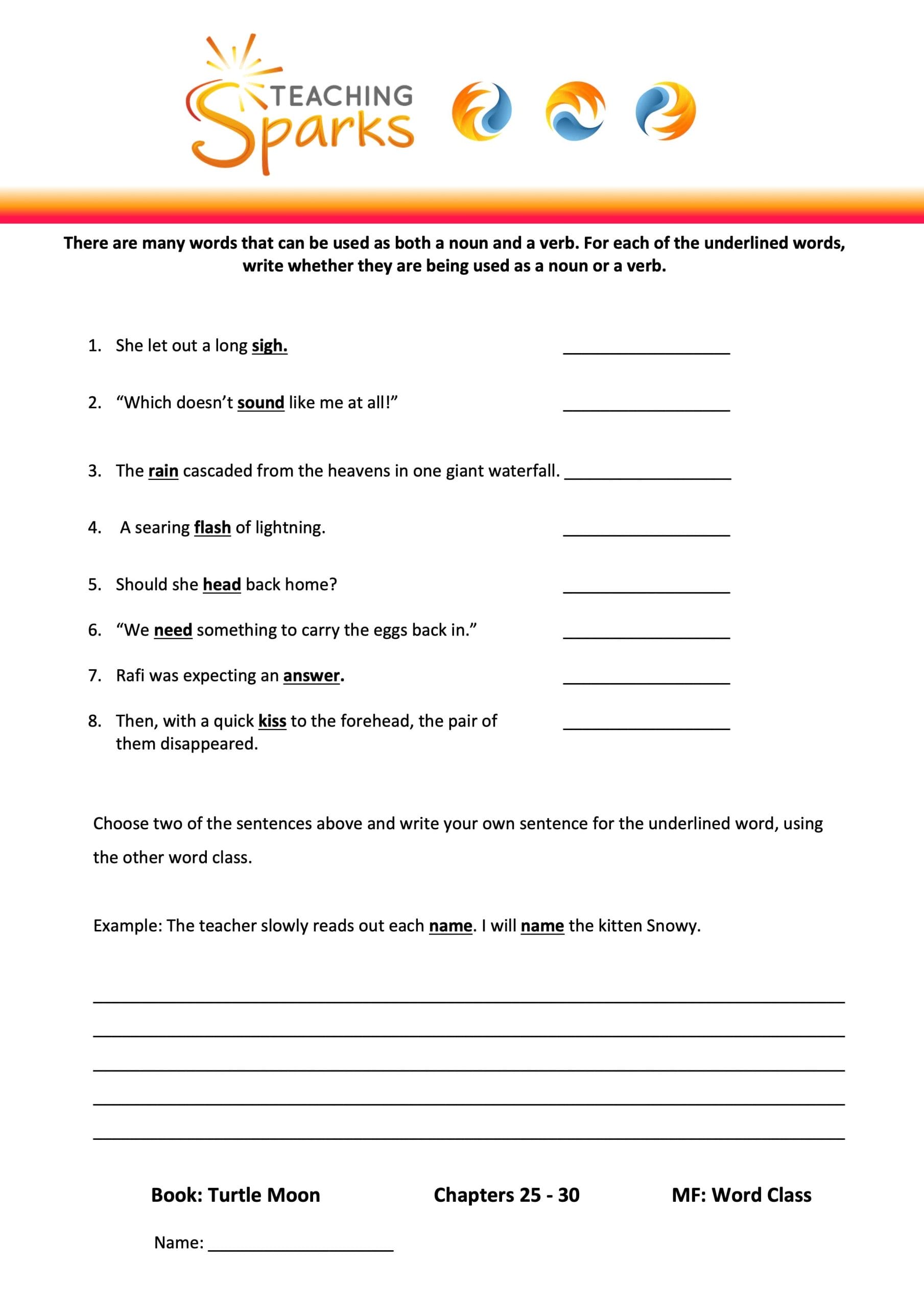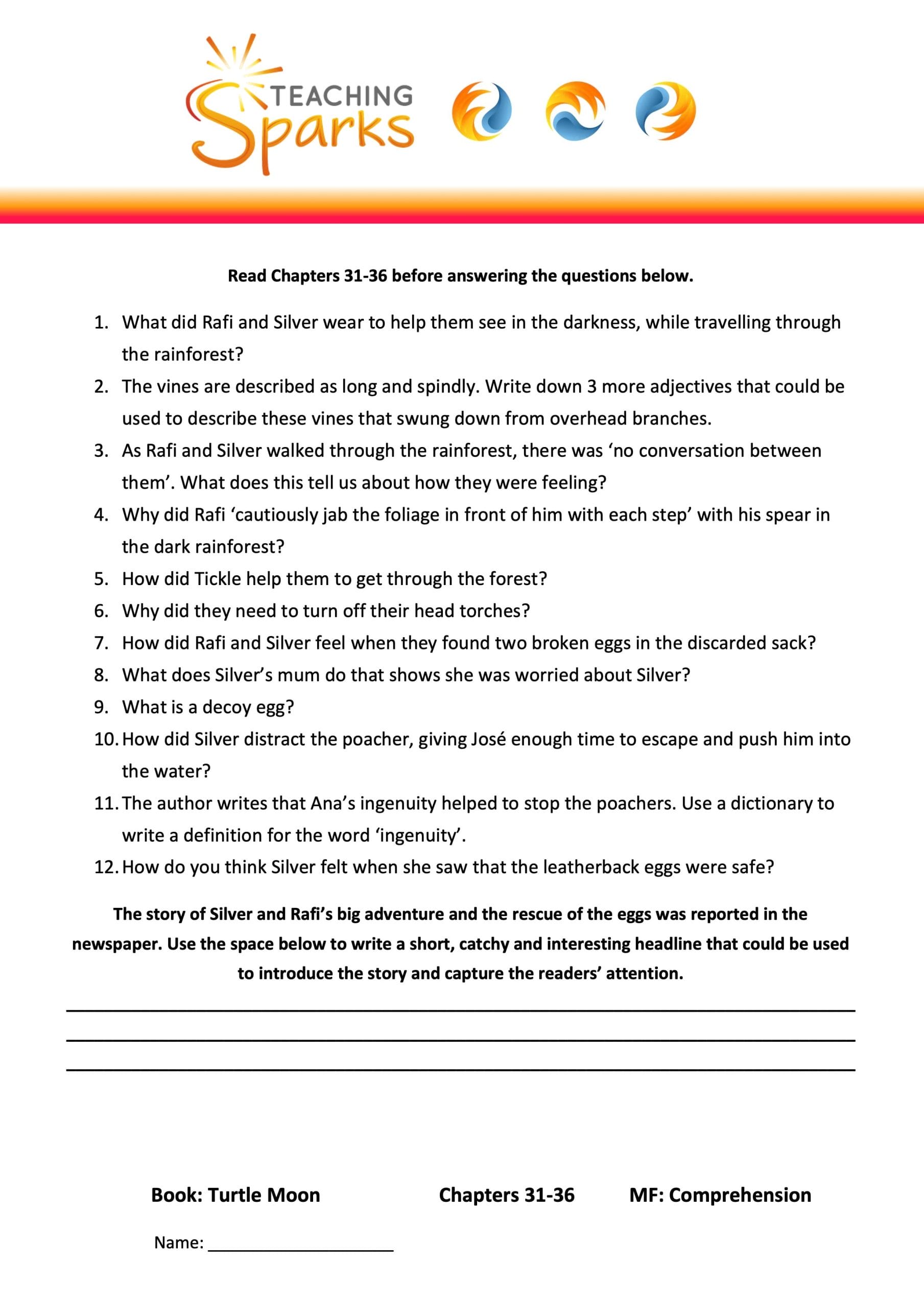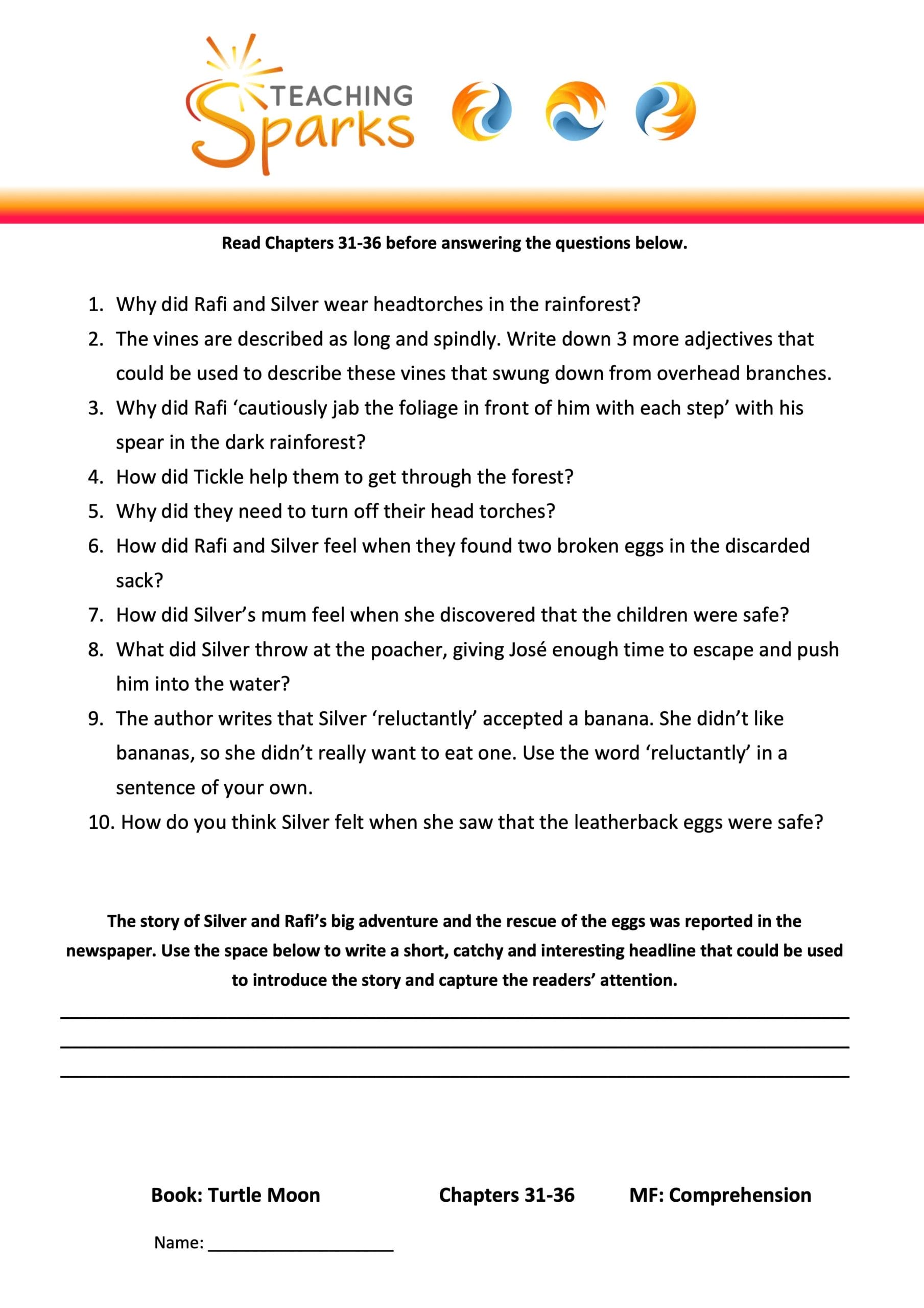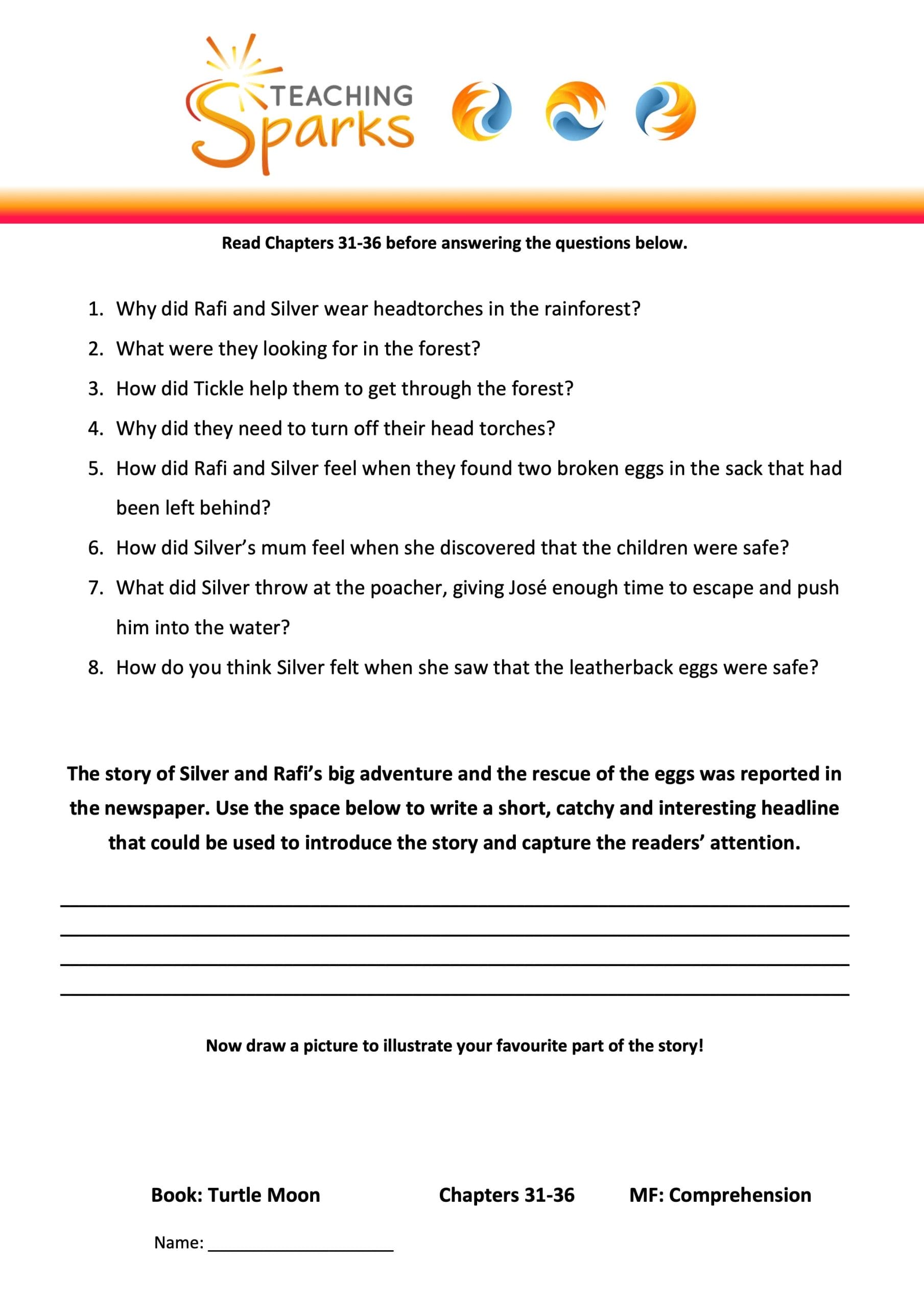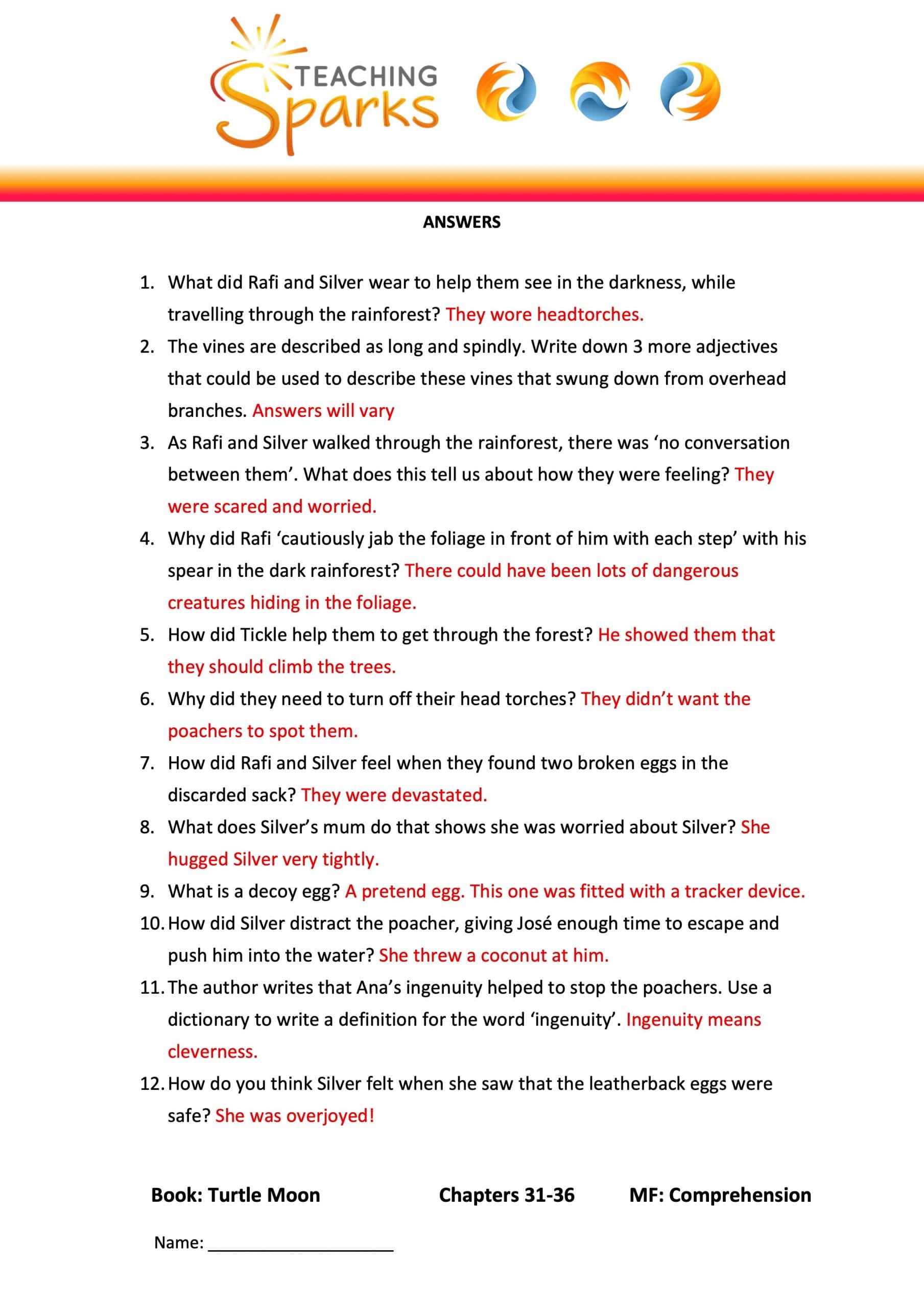Turtle Moon
Turtle Moon By Hannah Gold
Eleven-year-old Silver Trevelon senses the tension around her: her mum, a vet, has become quiet and distant after years of hope for another baby that never came, and her dad, a children’s book illustrator, seems to have lost his spark. The house they once decorated with excitement now holds a nursery gathering cobwebs, and Silver can’t escape the feeling that she, the only child, is somehow not enough. Then the family receives an unexpected opportunity — her dad is invited to work at a turtle rescue centre in Costa Rica, and the hope is that a change of scenery will breathe new life into all of them.
As the family settle into their new surroundings under the tropical sun, Silver begins to discover a world of vibrant wildness: the thick rainforest, the hot beach where endangered leatherback turtles nest, mischievous monkeys, a pet sloth named Speedy and her new friend Rafi. Silver’s immersion in this new environment gives her purpose and confidence, even as her mum remains weighed down by grief and her dad’s artistic colours gradually brighten in parallel with his renewed engagement in the wildlife project.
The turning point comes when a rare nesting leatherback turtle comes ashore and lays her clutch of eggs — a miracle moment, but one marred when the eggs are stolen from the centre. Silver and Rafi take it upon themselves to trace the stolen eggs, journeying into the heart of the jungle and facing genuine danger. While navigating wild terrain and a poaching threat, Silver is forced to confront not only the external crisis but the internal question of where she fits in her family and whether she is enough.
In the aftermath of their rescue mission and the emotional journey of the characters, Silver’s parents begin to heal in unexpected ways. Her mum reclaims her veterinary skills, and her dad rediscovers his artistic vision — all while Silver realises that she is valued and beloved, not by being a sibling or by filling a void, but as herself. Meanwhile, the turtles’ plight remains central: the story highlights the fragility of ecosystems, the threat of poaching, and how even small acts of guardianship — like Silver’s promise to protect the eggs under the light of the “turtle moon” — can matter.
Main Focus: Finding Evidence (Chapters 1-5)
This teaching resource focuses on Finding Evidence in the opening 5 chapters of Turtle Moon.
Your Year 4 / Year 5 class are presented with statements and a page number, they then must find evidence to support the statement.
Summary
The story opens in England, where Silver Trevelon, an eleven-year-old girl, lives with her parents in a house that has grown quiet and heavy with unspoken sadness. Her mum, a veterinarian, has withdrawn emotionally after years of failed attempts to have another baby, and her dad, a children’s book illustrator, seems to have lost his creative spark. Silver senses the emptiness in their home — especially in the unused nursery — and feels caught between wanting to help and feeling invisible.
When her dad receives an invitation to work at a turtle rescue centre in Costa Rica, the family reluctantly agrees to go.
Chapters 2–3 follow their journey abroad — the flight, the shock of the tropical heat, and Silver’s first impressions of this wild, colourful environment that contrasts sharply with the greyness they left behind. Silver feels excitement and awe but also uncertainty: can this really fix her family’s problems?
In chapters 4–5, the Trevelons begin to settle into their new surroundings. Silver explores the beach near the rescue centre and meets Rafi, a local boy about her age who helps at the centre. She also encounters Speedy, a pet sloth who adds gentle humour and warmth to her days. Through these early adventures, Silver begins to feel more alive and connected — especially when she learns about the leatherback turtles nesting along the beach and the threats they face. At the same time, her mother remains distant, and her father’s initial excitement starts to fade under the pressures of the unfamiliar environment.
By the end of chapter 5, a clear pattern is forming: the turtles’ struggle for survival mirrors Silver’s own wish to protect and rebuild her family. The Costa Rican setting — full of vibrant life, danger, and mystery — becomes a symbol of both healing and hope.
Unlock ResourceMain Focus: Punctuation (Chapter 6)
This activity focuses on identifying missing punctuation in the paragraphs / sentences and rewriting them to include: Capital letters, question marks, exclamation marks, full stops, apostrophes, speech marks etc.
This resource has been differentiated 6 ways to help cater for different abilities.
Chapter 6 Summary
In Chapter 6, Silver begins to feel more settled in Costa Rica, but the tension within her family continues to surface. Her dad throws himself into sketching the sea turtles and the landscapes, showing flickers of the creativity he’d lost back home. Silver quietly treasures seeing him come back to life, though she can’t ignore her mum’s ongoing distance. Her mother spends long hours helping at the turtle rescue centre, working tirelessly but with a cold, mechanical focus — as if caring for the animals is easier than facing her own family.
During a visit to the beach one evening, Silver witnesses something extraordinary: a leatherback turtle hauling herself onto the sand to nest. The moonlight turns the moment almost magical, and Silver is awed by the creature’s effort and fragility. Rafi explains how the eggs must be protected from poachers and predators, and Silver immediately feels a powerful responsibility to help. For the first time since arriving, she senses a true purpose — something bigger than herself.
However, the chapter also deepens the emotional undercurrent. As Silver returns home, she overhears her parents arguing softly — their words full of exhaustion rather than anger. The “Turtle Moon,” as Rafi had called it, becomes a symbol for Silver: light in the darkness, a reminder that life can begin again even after loss. The chapter closes on a hopeful yet uncertain note, with Silver determined to become part of the rescue work and perhaps, in doing so, help her family heal.
Main Focus: Vocabulary Extension (Chapter 7-10)
This resource explores some amazing vocabulary that will challenge your class. Your class must use the word bank to complete the sentences from chapters 7-10 of the Turtle Moon book.
Summary
Chapter 7
Silver’s growing involvement at the turtle rescue centre draws her closer to Rafi, who teaches her how to care for hatchlings and monitor the beaches. The work is both exciting and sobering — Silver learns about poachers, pollution, and how fragile the turtles’ lives are. Meanwhile, her mum stays distant, immersing herself in veterinary tasks with a quiet intensity that unsettles Silver. Her dad begins sketching the animals again, his drawings full of life and colour, hinting that the move might truly be helping him heal. Silver starts to imagine her family mending, though she senses an unspoken sadness that still hangs between her parents.
Chapter 8
Silver and Rafi are given permission to help during a night patrol. Under the glow of the “turtle moon,” they see a nest of baby turtles emerge and crawl toward the sea. The scene fills Silver with wonder and a fierce protectiveness. When a few hatchlings are caught in debris, she rescues them instinctively — a symbolic act that deepens her confidence. But the joy of that night contrasts sharply with what follows: the next morning, the centre discovers that a recently laid clutch of turtle eggs has been stolen. Silver feels devastated and angry, convinced that if she’d been more alert, she could have stopped it.
Chapter 9
Determined to help, Silver and Rafi begin asking quiet questions around the village and learn rumours of egg poachers selling the eggs as rare delicacies. Against better judgment, they decide to follow a lead into the rainforest. Their adventure is dangerous and thrilling — they navigate thick vines, unfamiliar sounds, and rising fear. The setting mirrors Silver’s inner turmoil: confusion, courage, and hope tangled together. Along the way, she realises how much she’s changed — she’s braver now, less consumed by sadness, and driven by purpose.
Chapter 10:
Their search brings them face-to-face with the harsh reality of wildlife exploitation. Although they don’t immediately recover the eggs, their efforts lead to adults at the centre and local authorities becoming aware of the poachers’ movements. The experience shakes Silver but also strengthens her. When she returns home, her parents finally talk — honestly, quietly, and without pretense. The unspoken pain between them begins to ease. Silver senses that, just like the turtles who return to the sea after struggle, her family, too, might find their way forward. The chapter closes on a tone of renewed hope and connection, framed by the rhythmic sound of waves and the moonlit beach that has become her sanctuary.
Main Focus: Comprehension (Chapter 11-13)
This comprehension resource focuses on Chapters 11-13 of Turtle Moon by Hannah Gold and will challenge your class to find information and use and apply their knowledge to answer questions accurately. The resource is differentiated to cater for different abilities in your class.
Summary
In chapters 11–13, Rio continues his mission to help the stranded baby turtle he has named Sandy, feeling a growing sense of responsibility for its survival. With the help of his new friend Marina, he learns more about the dangers turtles face — from light pollution to plastic waste — and how human activity threatens their natural instincts.
As they work together to keep Sandy safe, Rio begins to open up about his own feelings of displacement and grief after his father’s death, finding comfort in caring for the little turtle. Marina’s knowledge and quiet confidence help Rio see that small actions can make a real difference, even when the world feels overwhelming.
Meanwhile, the story deepens emotionally as Rio’s connection to both nature and his new environment strengthens. He starts to see parallels between Sandy’s struggle to survive and his own need to find direction and belonging.
The chapters highlight themes of healing, hope, and empathy — showing how Rio’s love for Sandy helps him process his loss and reconnect with the world around him. By the end of chapter 13, both Rio and the reader sense that saving the turtle is as much about saving himself, marking a quiet but powerful shift in his journey.
Unlock ResourceMain Focus: Verb Tenses (Chapters 13-18)
This resource focuses on verbs and tenses. Your class will be challenged to identify verbs from the given sentences and sort them into categories.
Summary
In chapters 13–18 of Turtle Moon by Hannah Gold, Rio and Marina deepen their friendship as they work together to keep the baby turtle, Sandy, safe and healthy. They visit the turtle rescue centre, where Rio learns more about the threats sea turtles face from pollution and human activity. These chapters show Rio becoming more confident and hopeful as he finds purpose in helping Sandy, while also opening up about his feelings of loss and homesickness. The experience begins to change him, helping him see that caring for the turtle is also helping him heal.
Main Focus: Non-Fiction (Species of Turtle)
In this resource, children will learn about four different species of sea turtle — the green sea turtle, hawksbill, loggerhead, and leatherback — and explore what makes each one unique.
They will discover the turtles’ scientific names, habitats, diets, sizes, and special adaptations that help them survive in their environments. Through reading and discussion, children will compare the differences between herbivores, omnivores, and carnivores, understand how each turtle’s body shape and behaviour suit its way of life, and learn where in the world these turtles can be found. They will also begin to consider the importance of conservation, particularly for endangered species like the leatherback, developing both their scientific knowledge and awareness of environmental responsibility.
Unlock ResourceMain Focus: Openers (Chapters 19-22)
This activity involves your class having some prior knowledge of different sentence openers. It explores noun, verb, time connective, adverb and preposition.
Summary
In chapters 19–23 of Turtle Moon by Hannah Gold, Rio and Marina continue caring for Sandy, the baby turtle, while preparing for its release back into the ocean. During this time, Rio grows more confident and starts to feel truly connected to nature and his new community. He learns more about how people can help protect turtles and their habitats, and he begins to see how his small actions can make a big difference. As Sandy grows stronger, Rio struggles with the idea of letting the turtle go but comes to understand that true care means allowing it to live freely. By the end of these chapters, Sandy’s release becomes a powerful, emotional moment for Rio — symbolising hope, healing, and a new beginning for both of them.
Main Focus: Word Class (Chapters 25-30)
There are many words that can be used as both a noun and a verb. For each of the underlined words, circle whether it is a verb or a noun. Then write a sentence for each word using the other word class. Example: The teacher slowly reads out each name. (verb/noun) I will name the kitten Snowy.
Summary
In these chapters, the story reaches a turning point as the main characters face both emotional and physical challenges. The bond between the child protagonist and the turtle (and possibly a rescued hatchling or an injured sea turtle) deepens, showing how their connection represents trust, healing, and courage. The child’s understanding of the ocean and its fragile balance grows stronger, and they begin to see how small actions can make a big difference in protecting wildlife.
As tension builds, the characters are tested by difficult circumstances — perhaps a storm, a separation, or a moral choice about how to help the turtle. These moments bring out themes of bravery, teamwork, and hope. The setting — illuminated by moonlight or the sea at night — mirrors the inner emotions of the characters: fear, wonder, and the spark of determination. The child learns that care for animals is also a way of caring for oneself and others.
By the end of this section, key relationships come full circle. There’s a sense of renewal and resolution — the turtle’s journey reflects the child’s own path toward healing, acceptance, or understanding. The moon, which has been a symbol of guidance throughout, shines as a sign of hope and new beginnings. The reader is left with a feeling that change, while sometimes painful, can lead to growth, connection, and peace.
Unlock ResourceMain Focus: Comprehension (Chapters 31-35)
This is another comprehension with a range of questions for your Year 4 / Year 5 class to complete linked to Chapters 31-35 and concludes the resources for this reading pack linked to Turtle Moon by Hannah Gold.
Summary
In this section, the tension in the story climbs as Silver and her friends face the consequences of the stolen turtle eggs. The setting becomes more urgent — the jungle, the beach, the sanctuary are all full of risk and responsibility. Silver finds herself confronted with real danger and must rely on her instincts, her allies, and her growing confidence.
Meanwhile, her parents continue wrestling with their personal struggles and the baggage they brought to Costa Rica; the family dynamic begins to shift as hope flickers again.
As the quest to recover the eggs moves forward, the characters make discoveries about the poaching ring, the environment, and themselves. Silver’s friendship with Rafi deepens, and she must make choices that test her courage and sense of identity. At the same time, her parents begin to engage more actively — finding new roles and ways to contribute, healing their own sadness through their involvement in the sanctuary’s mission.
The natural world — the turtle, the moonlit beach, the rain, the sand — mirror the inner journeys each character is on.
By the end of chapter 35, there is a sense of turning-point: the danger is no longer just external but internal as well (fear, regret, guilt, hope).
Silver has matured through the challenge and her parents have started to reconnect with their purpose and each other. The stakes remain high, but there is an emerging promise of resolution — the paddock of nature, the eggs, the horizon all seem to hint that things will move toward healing, change and renewal.
Unlock Resource
